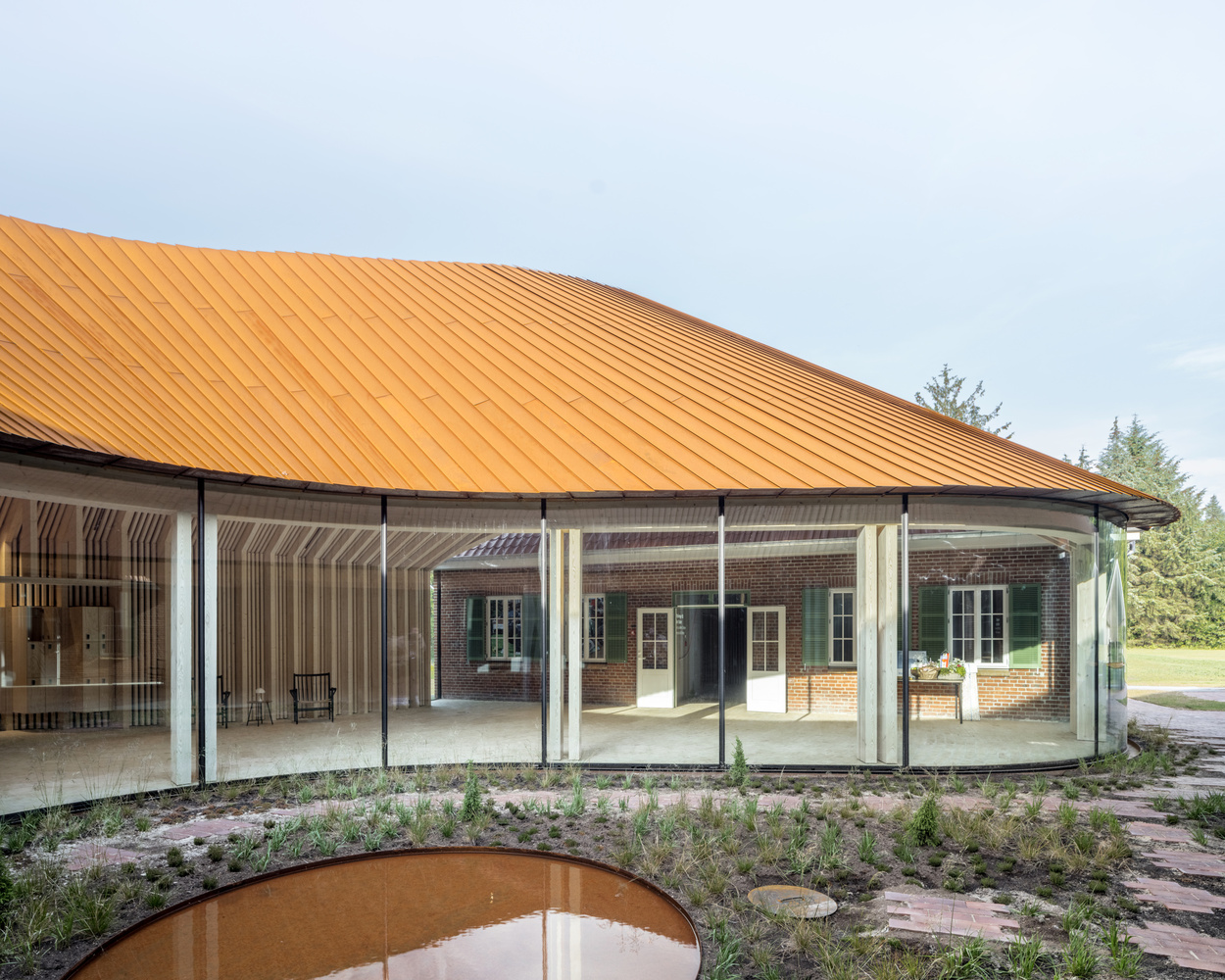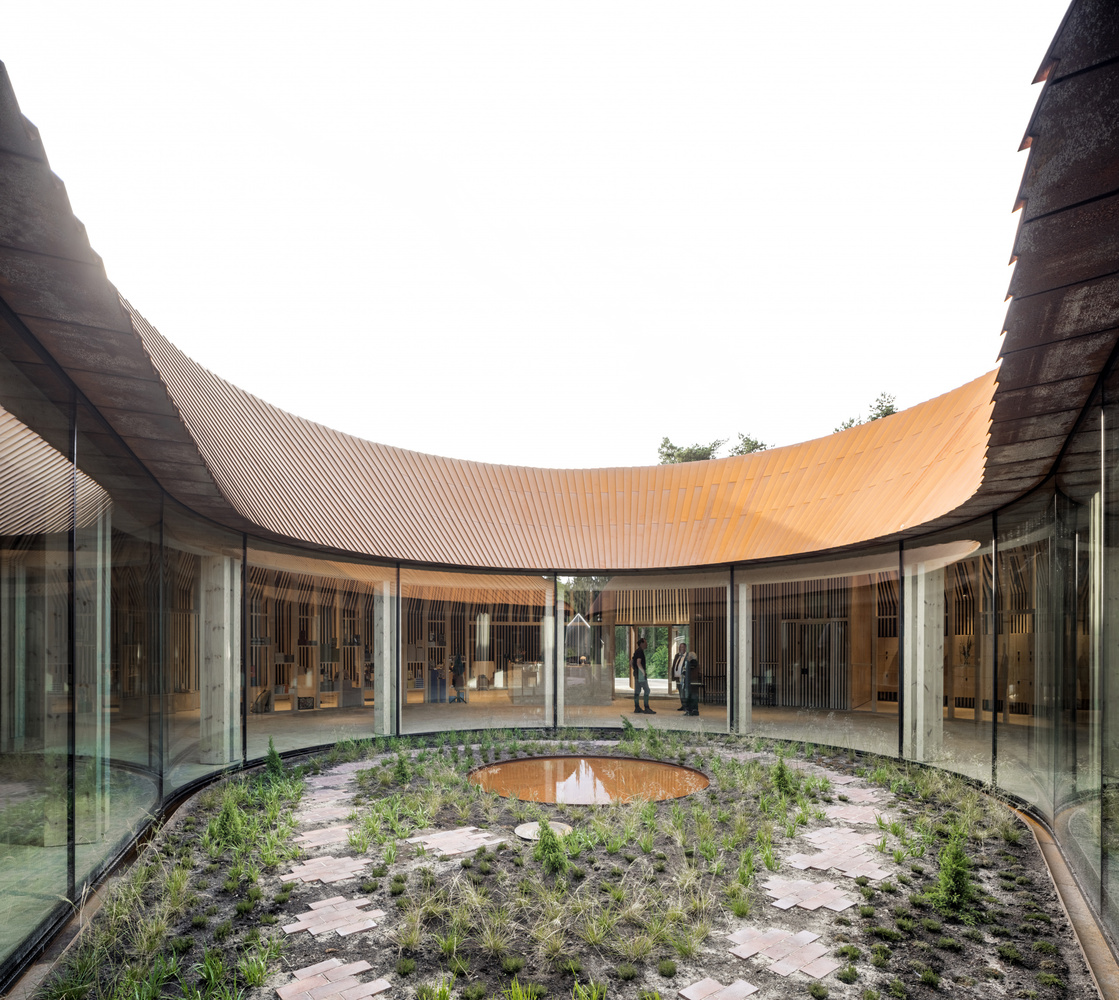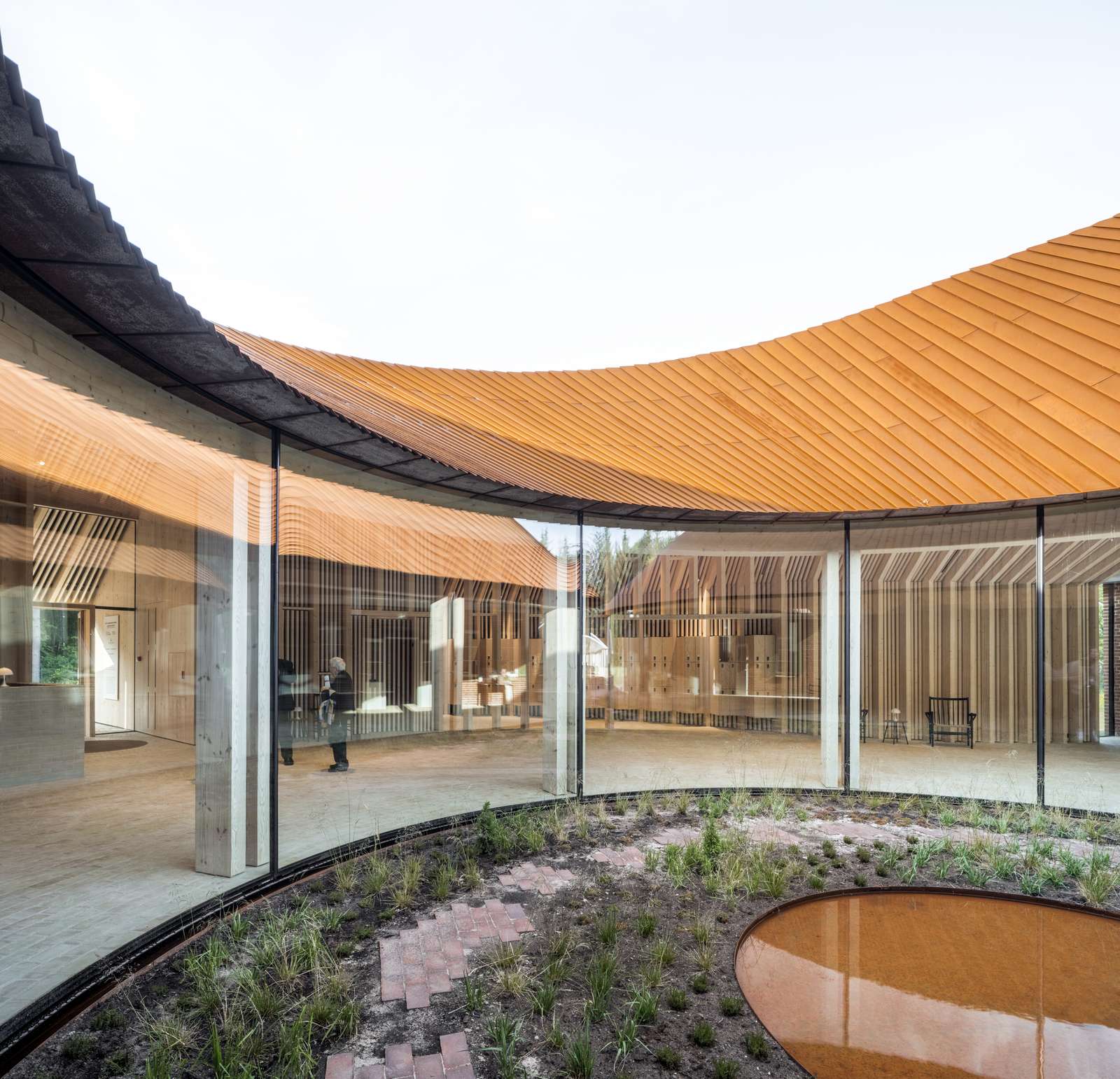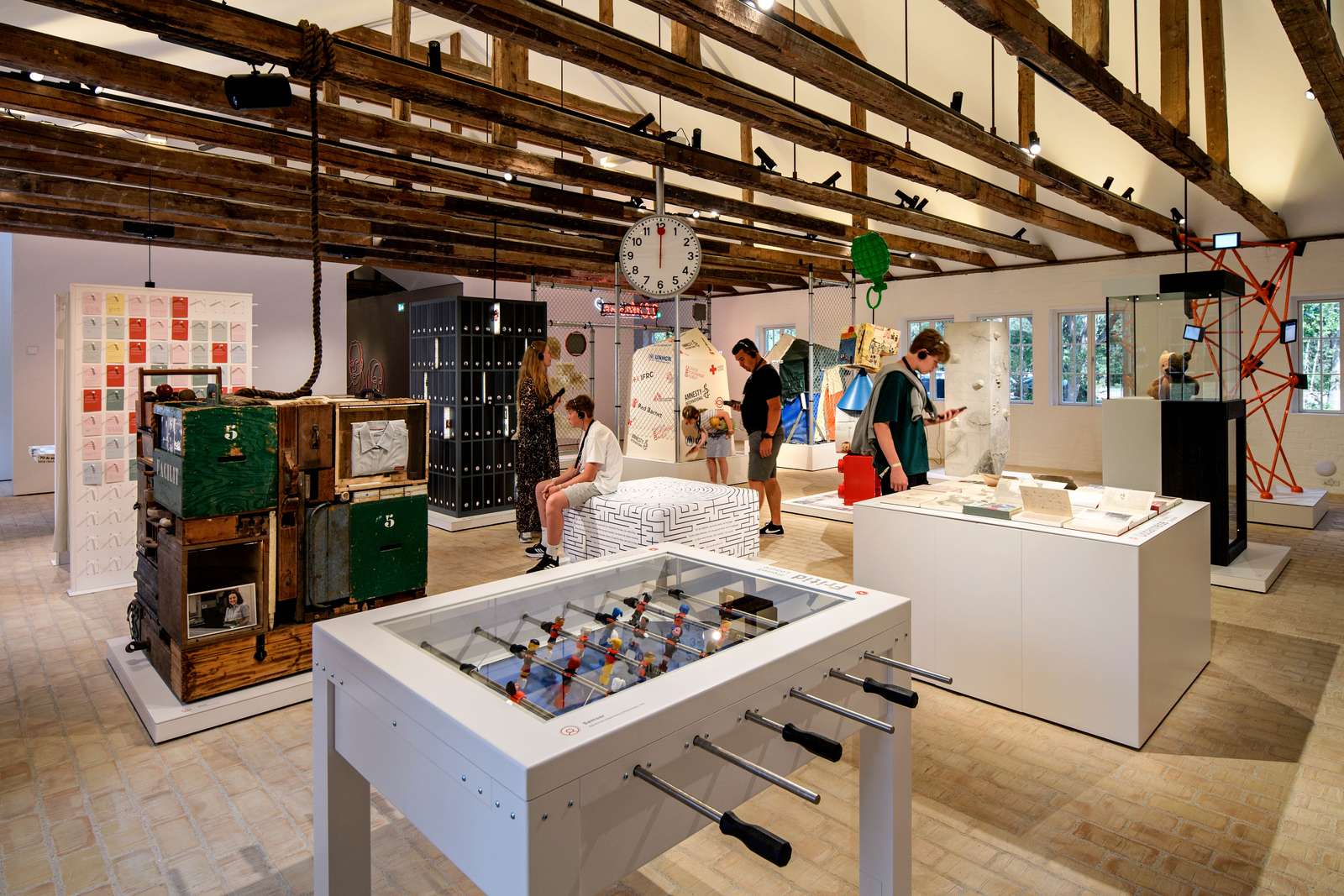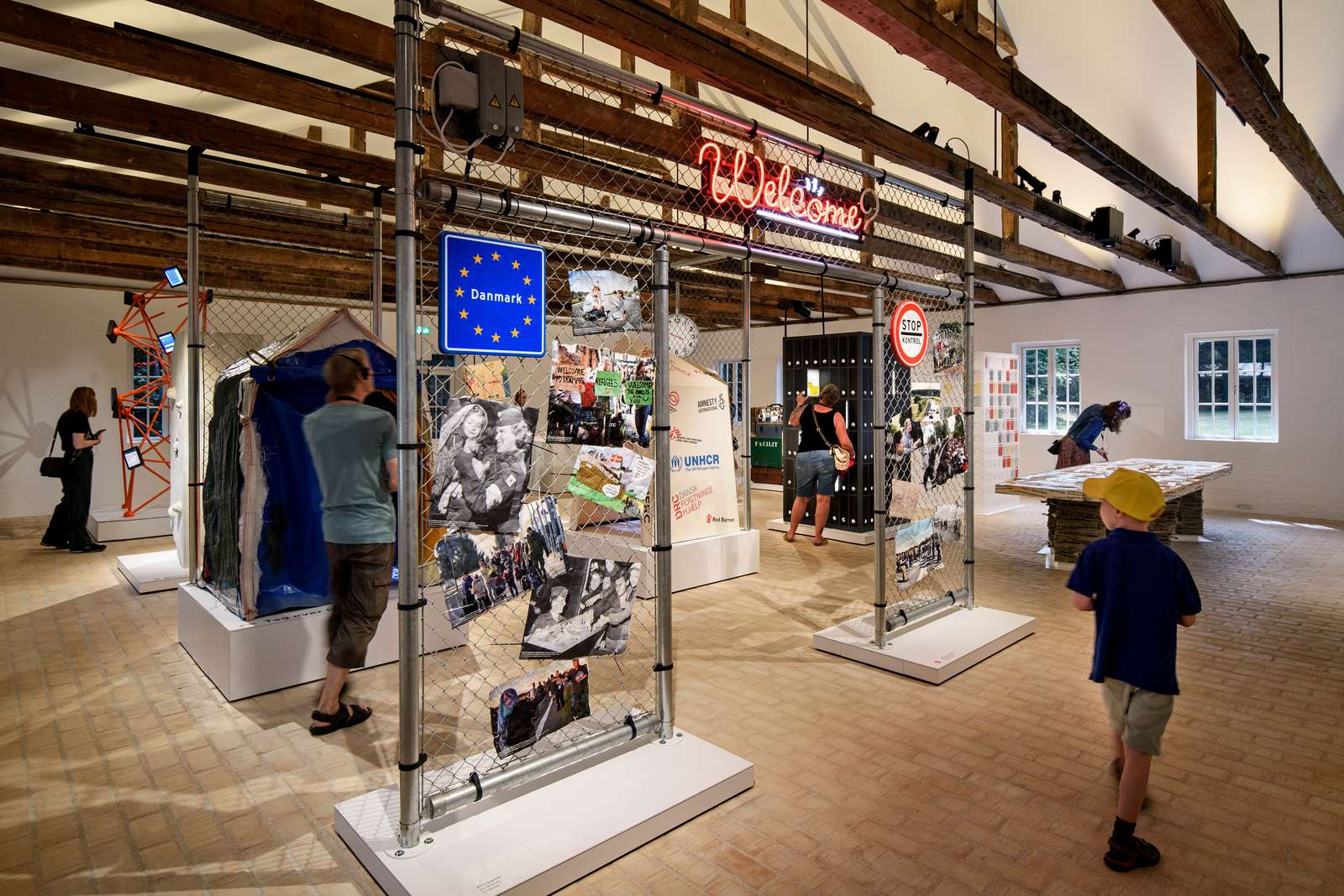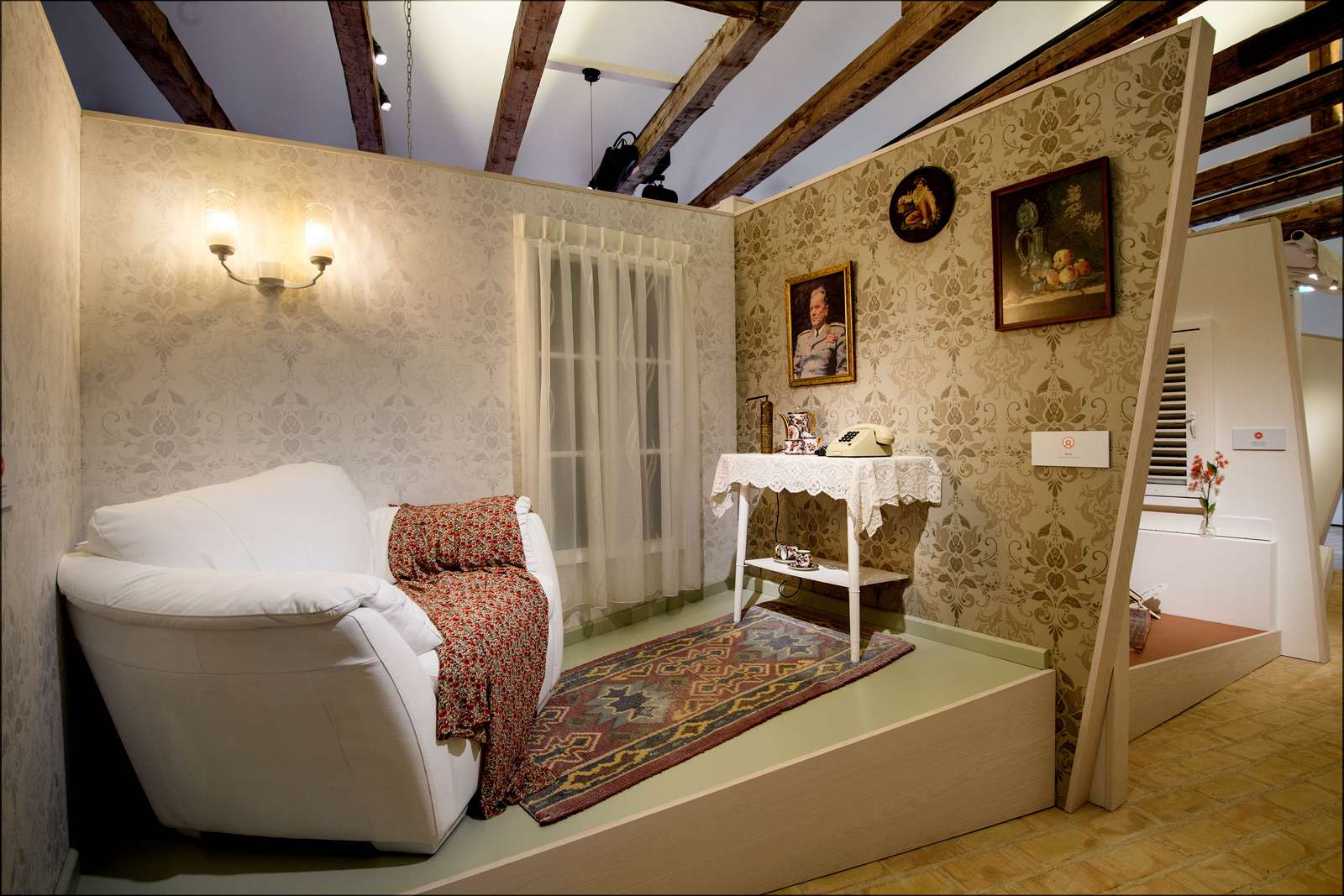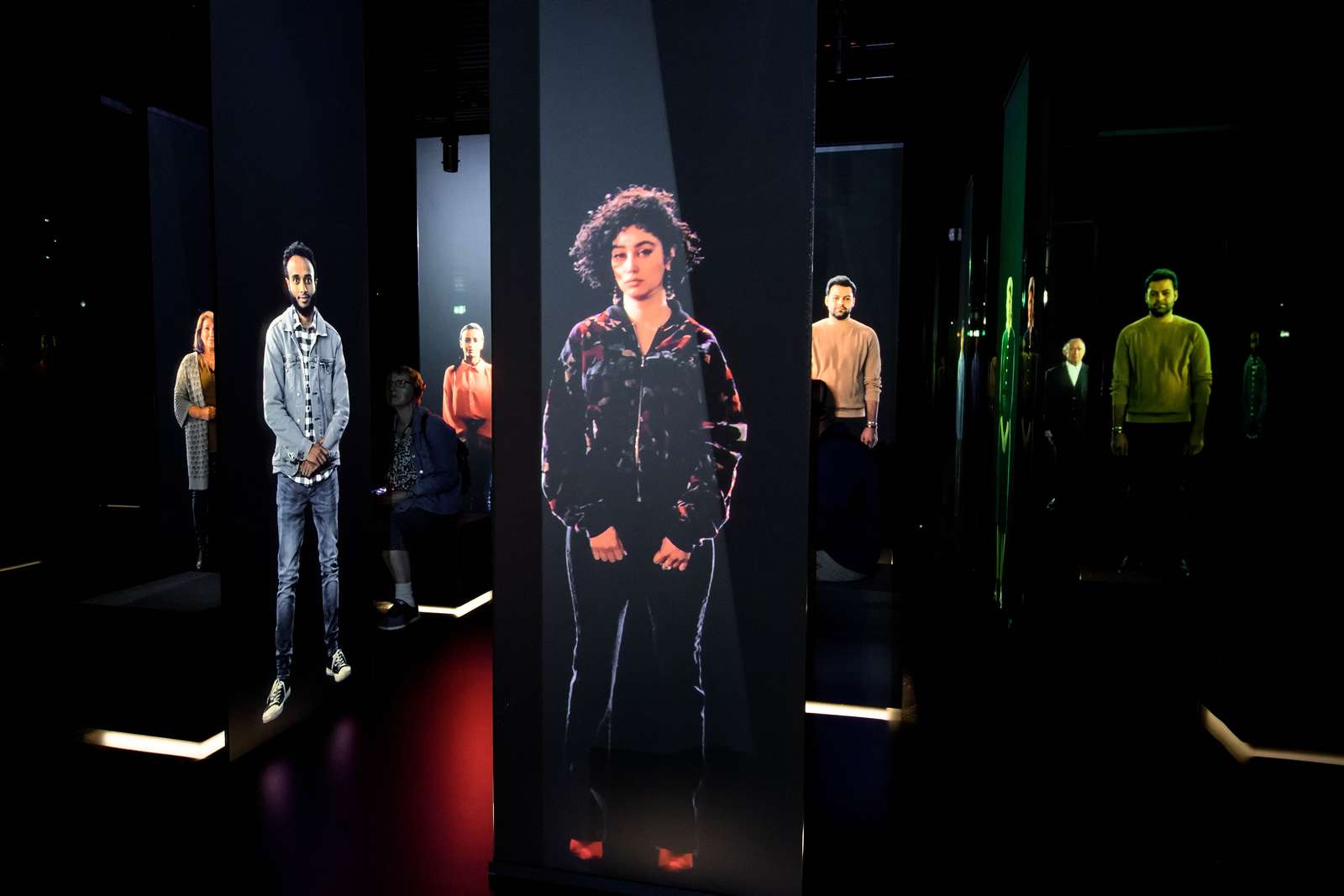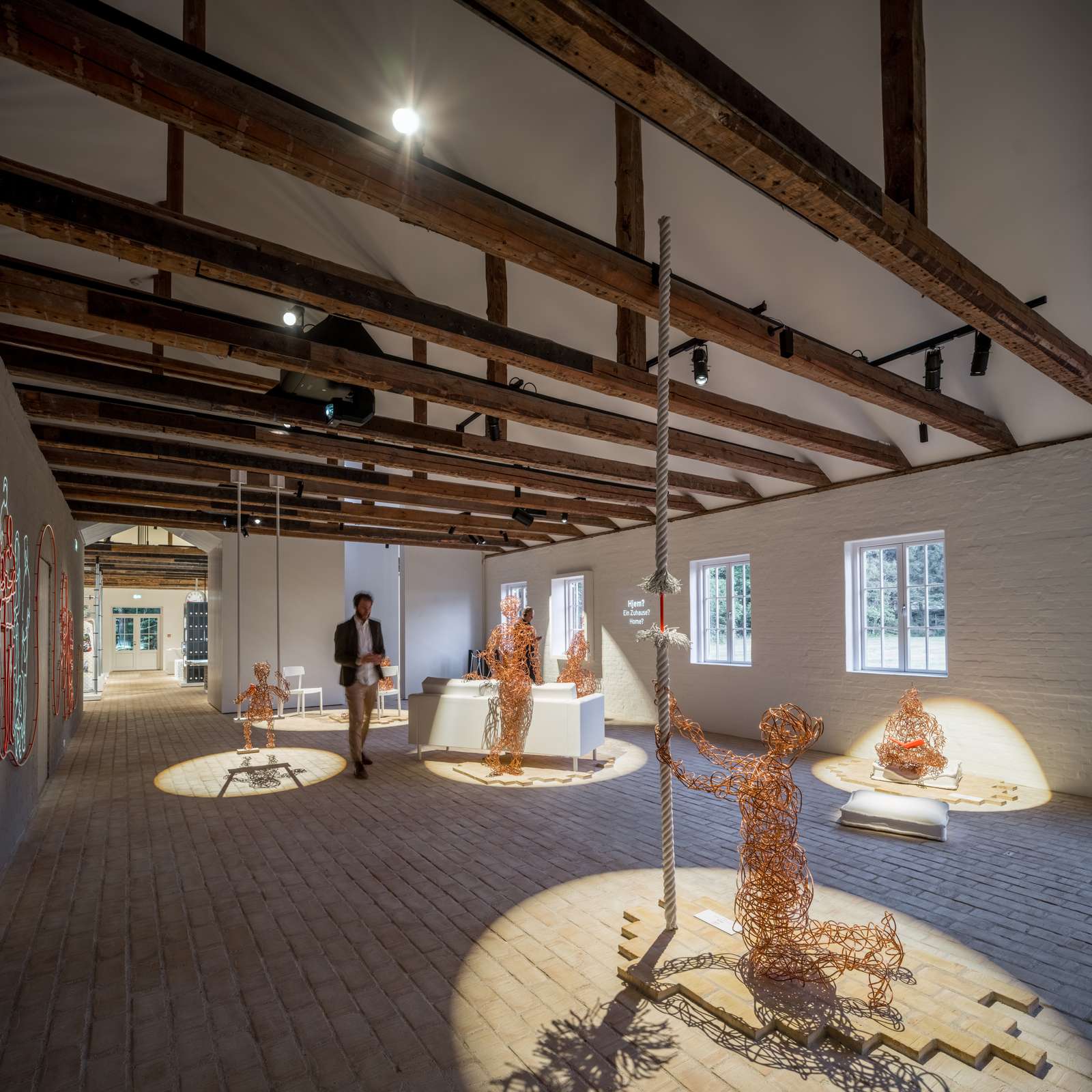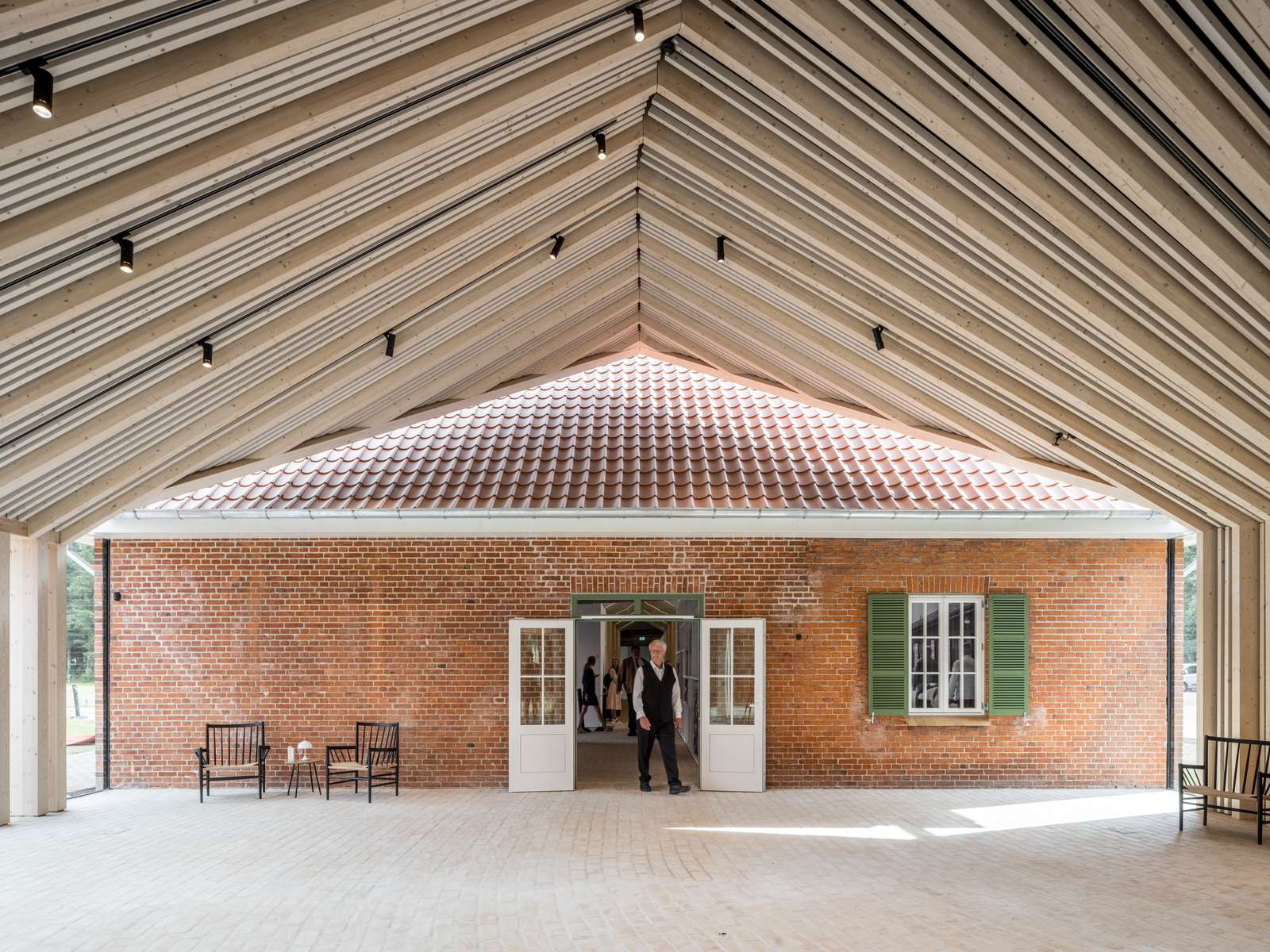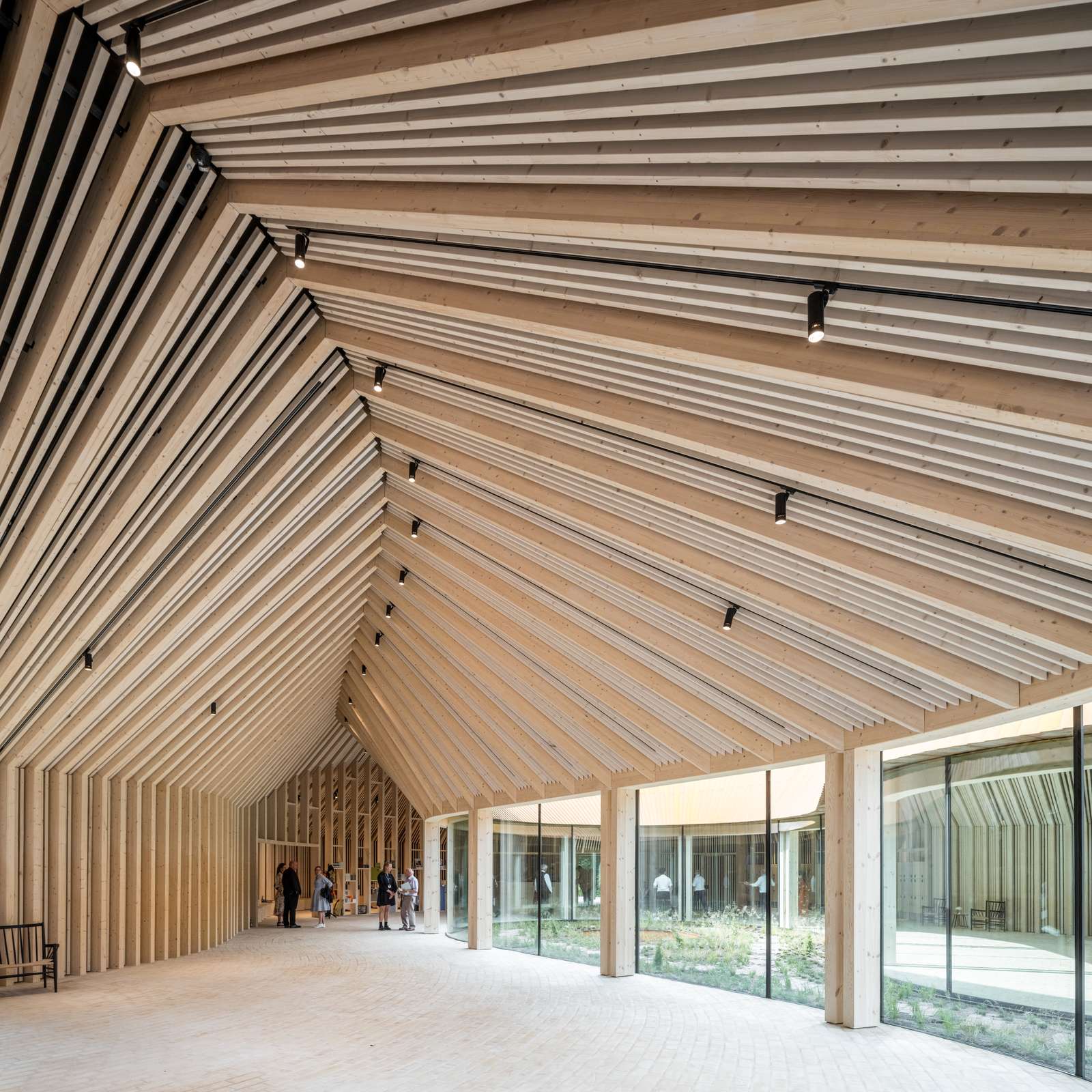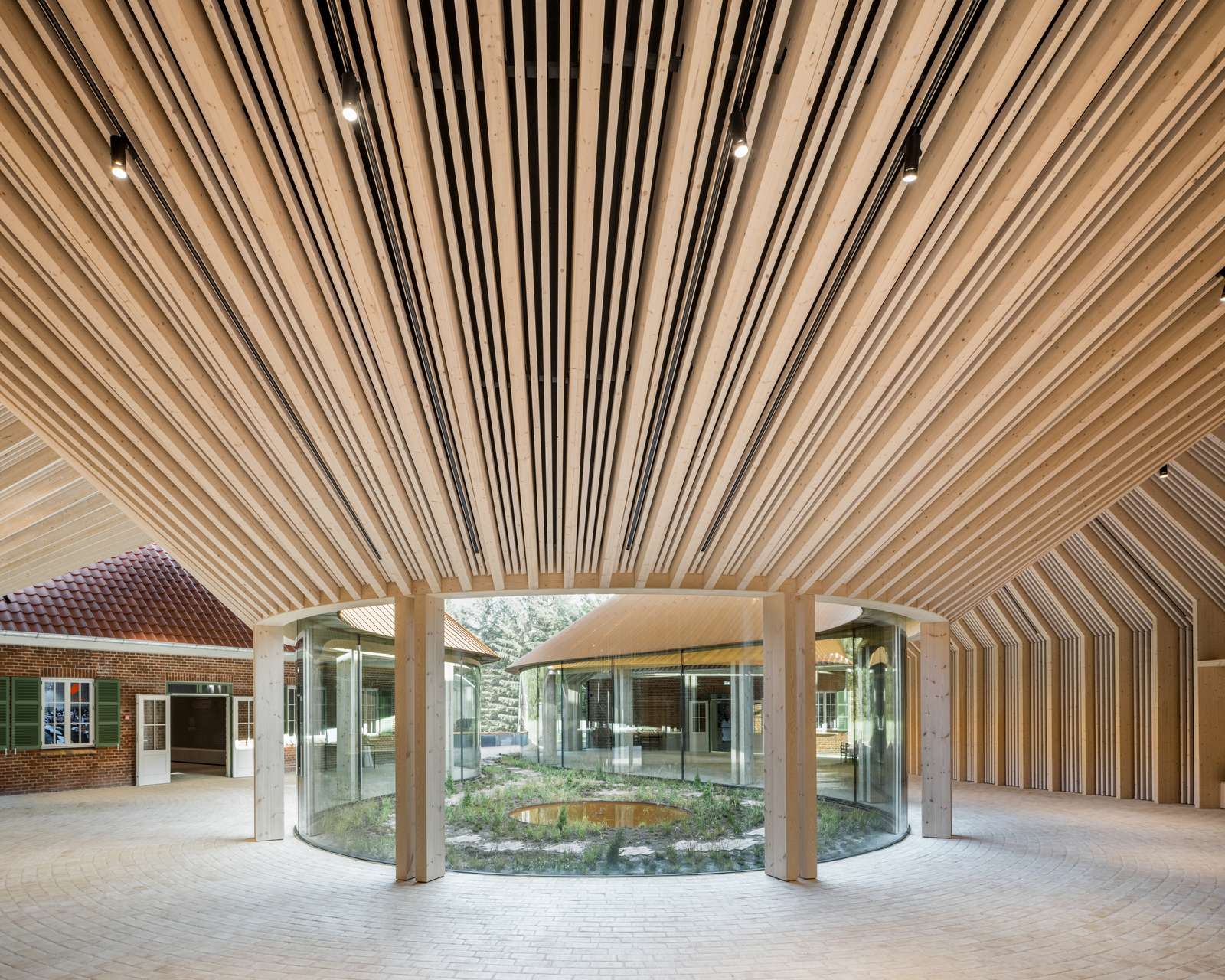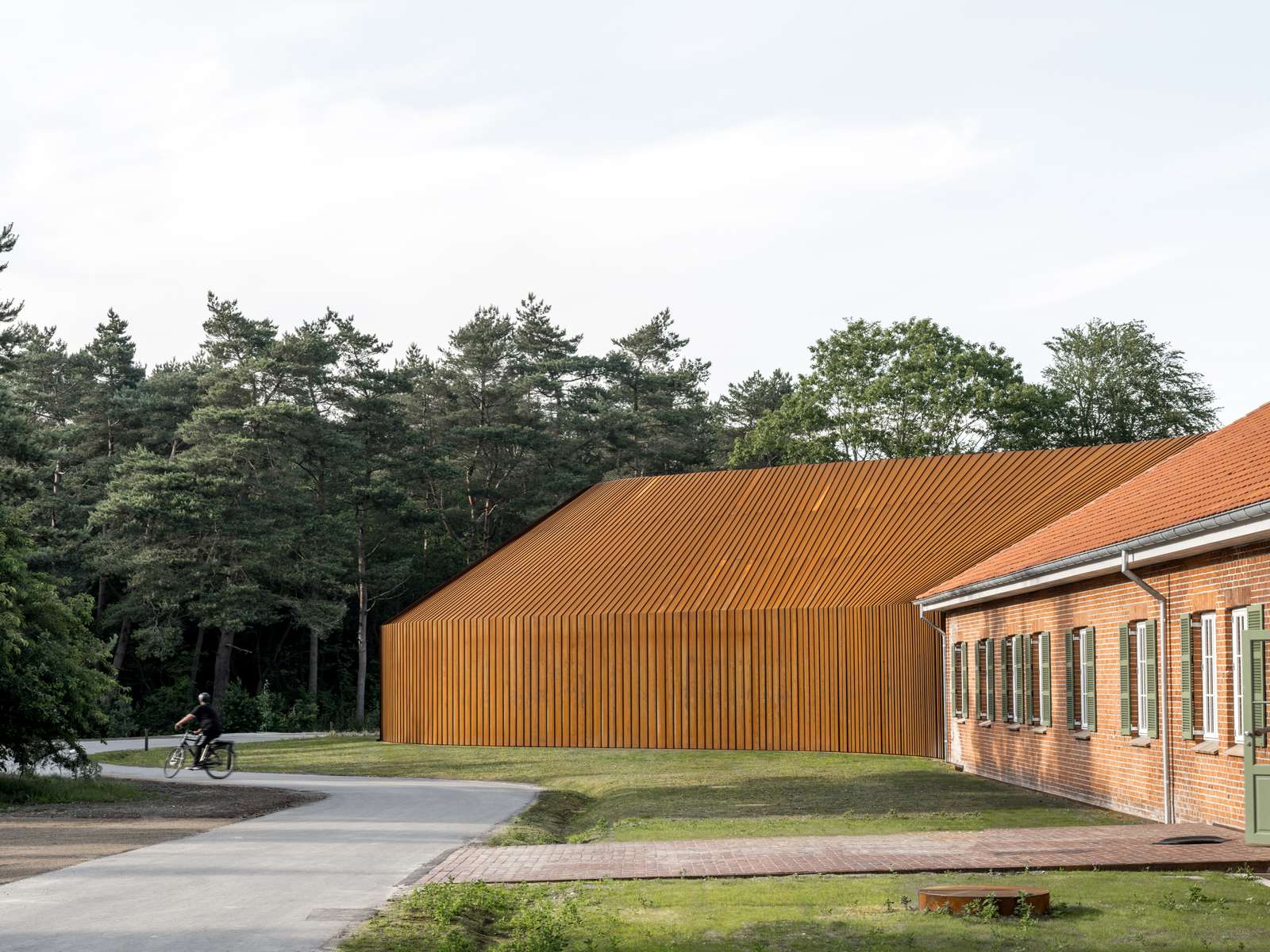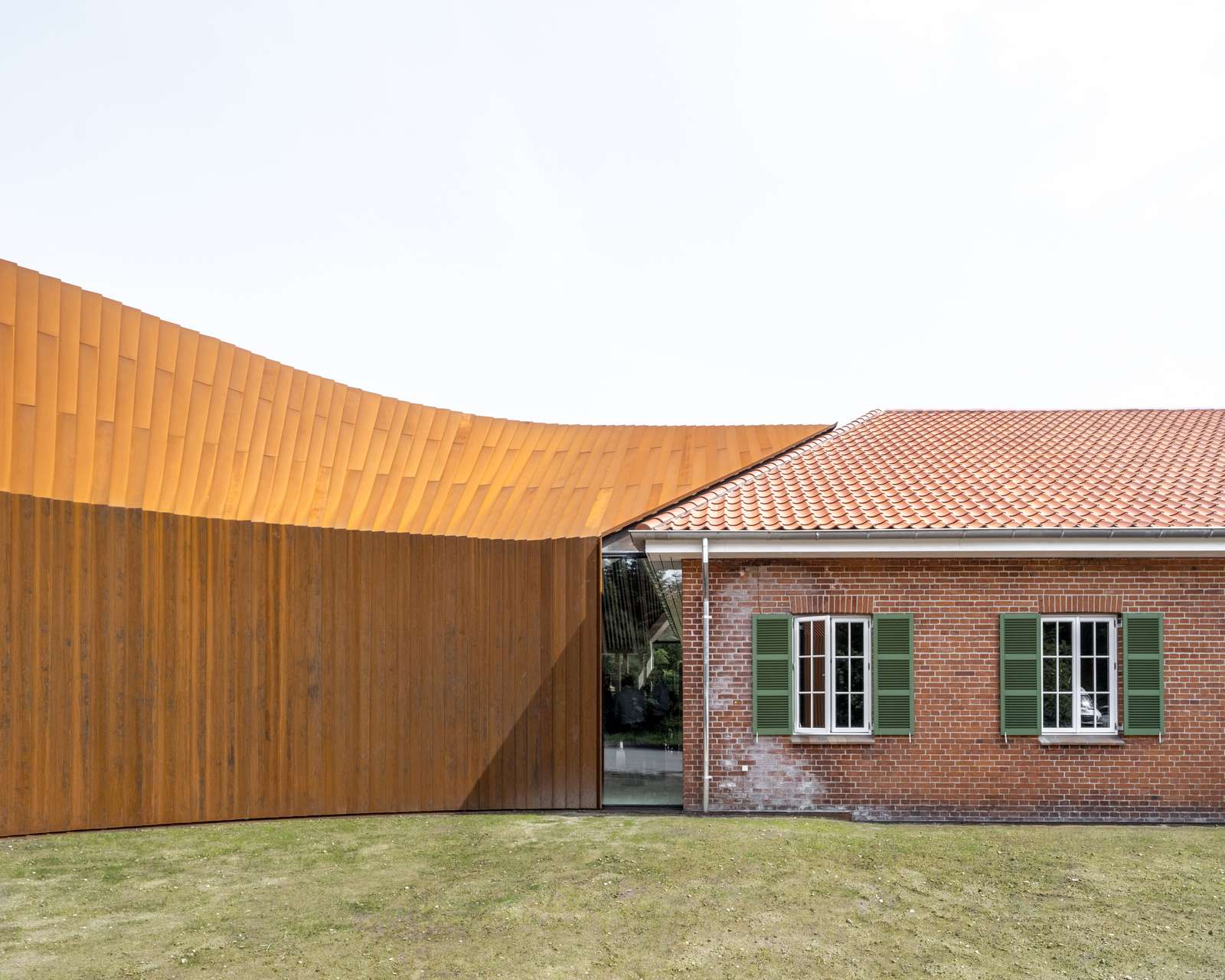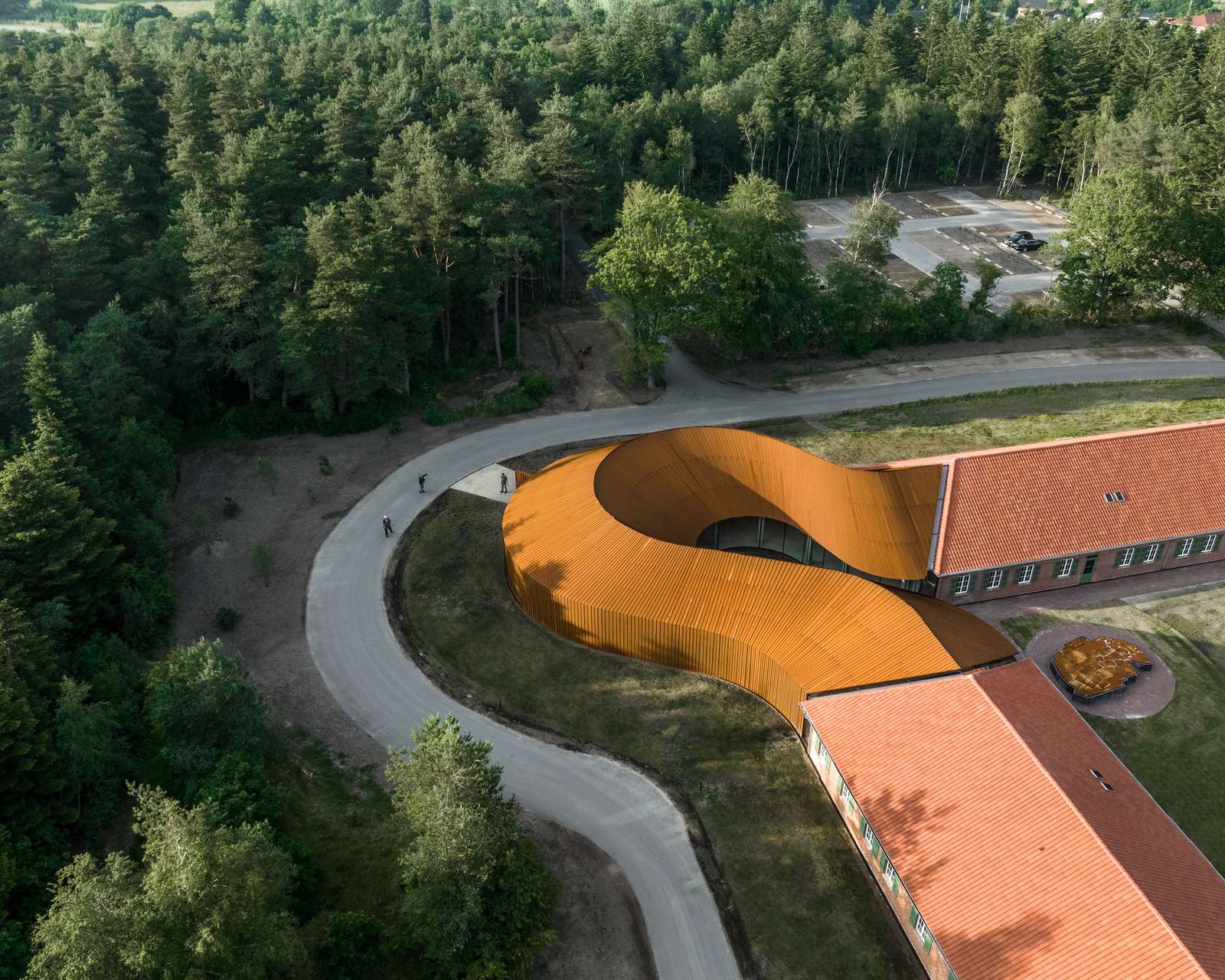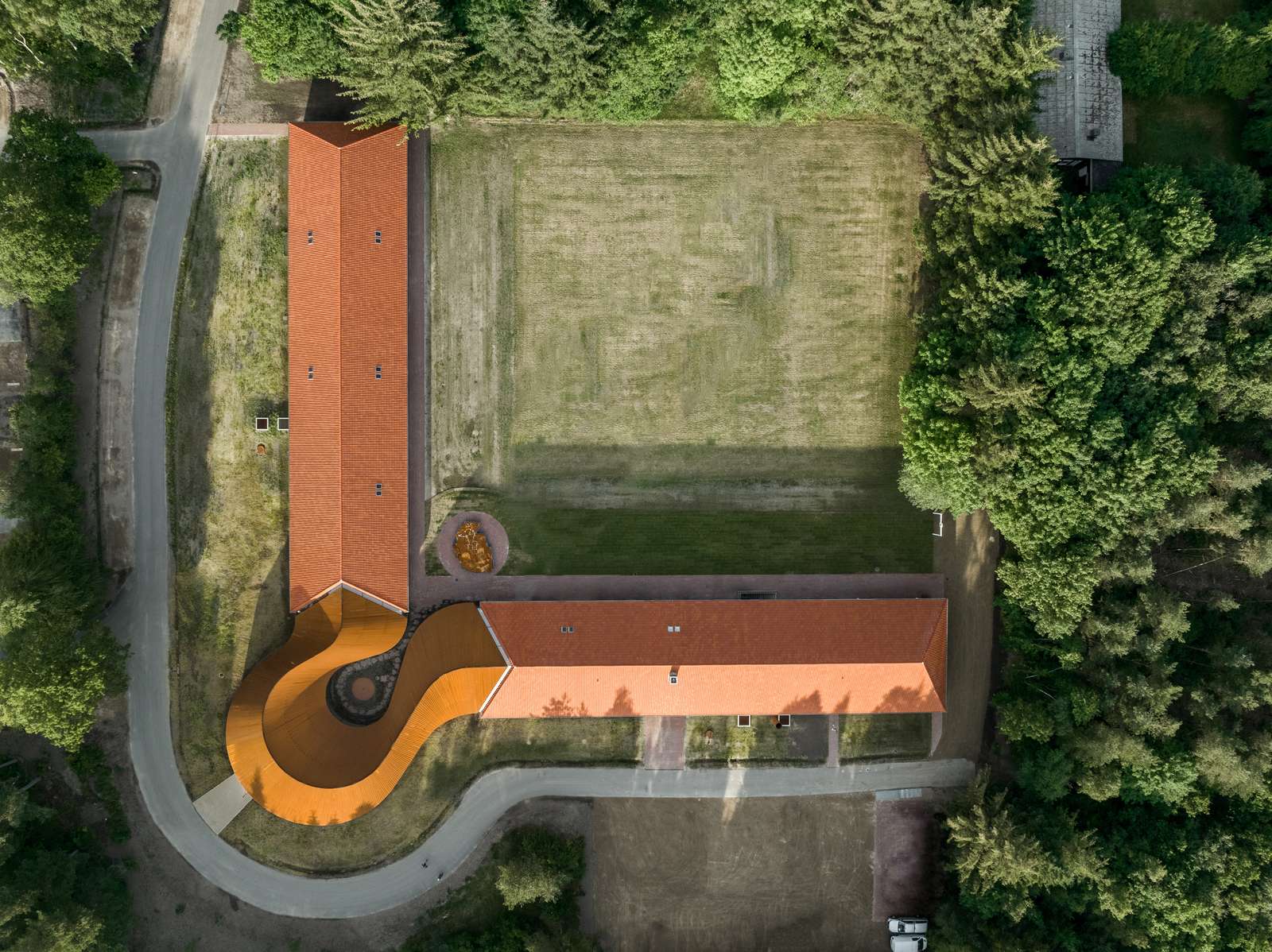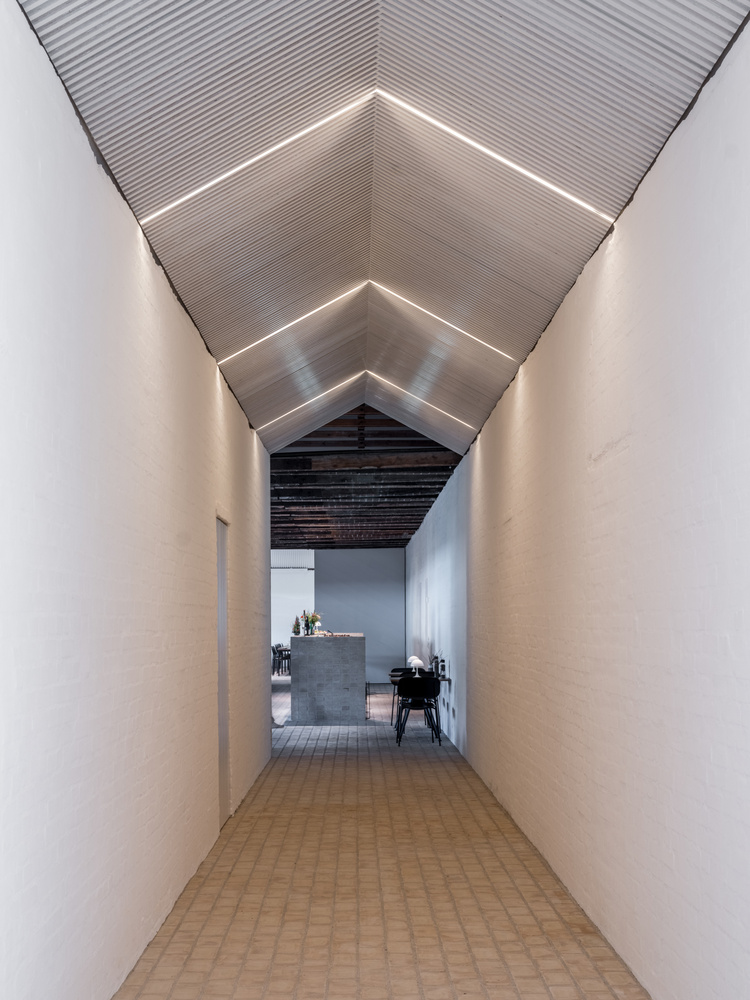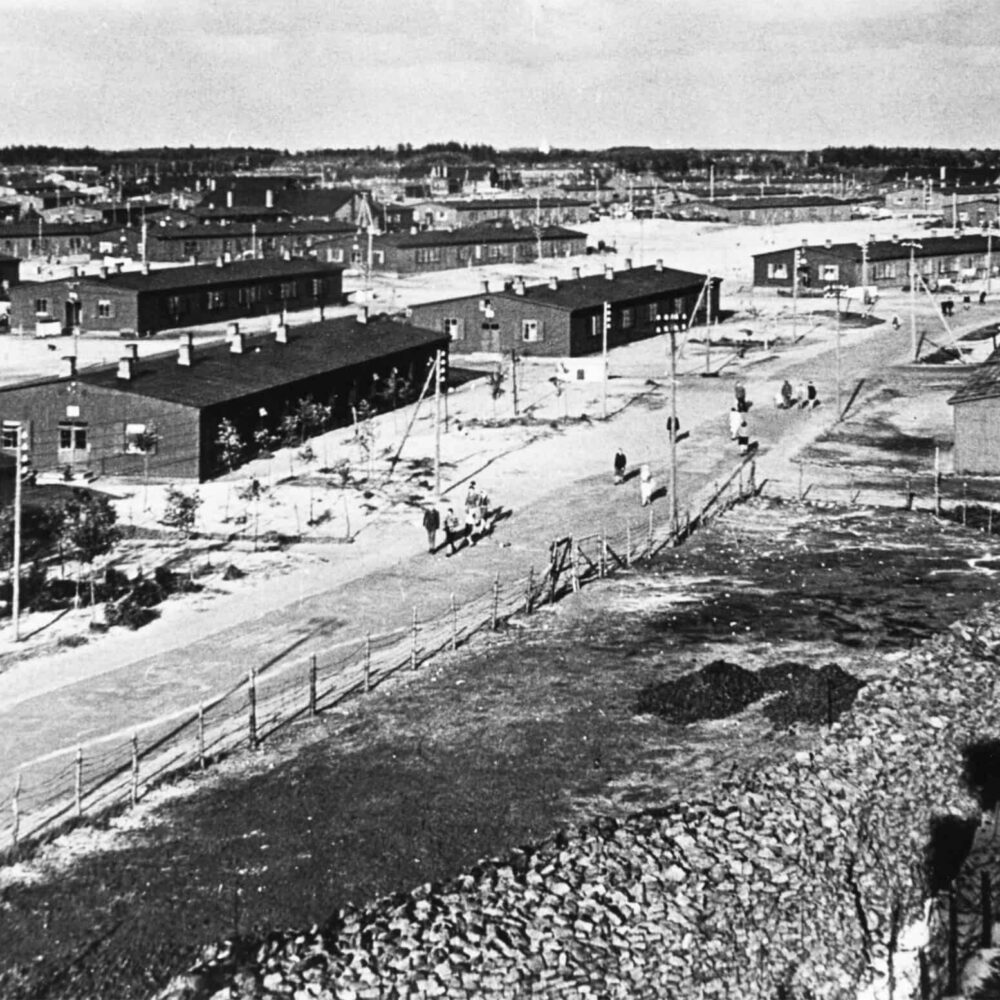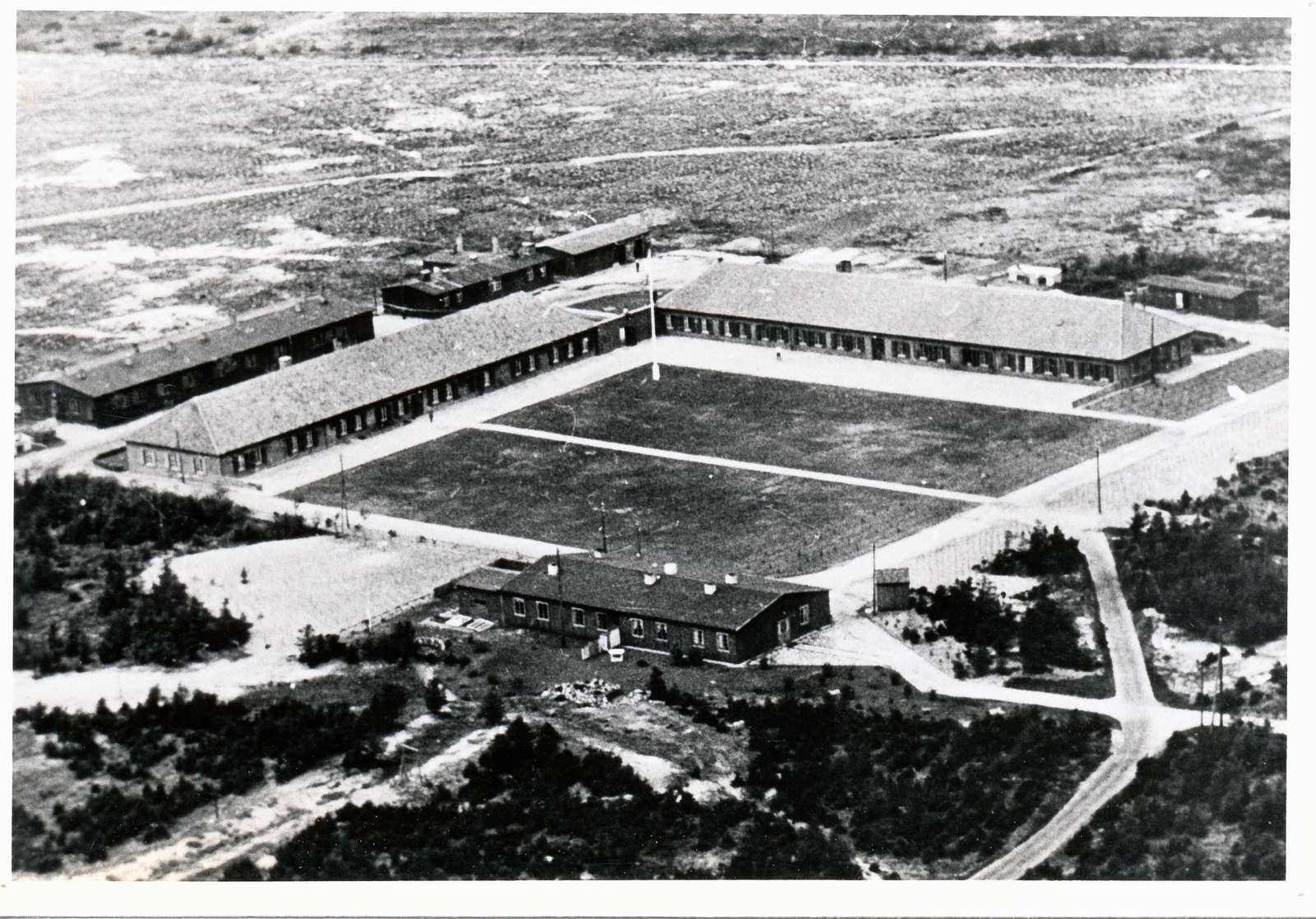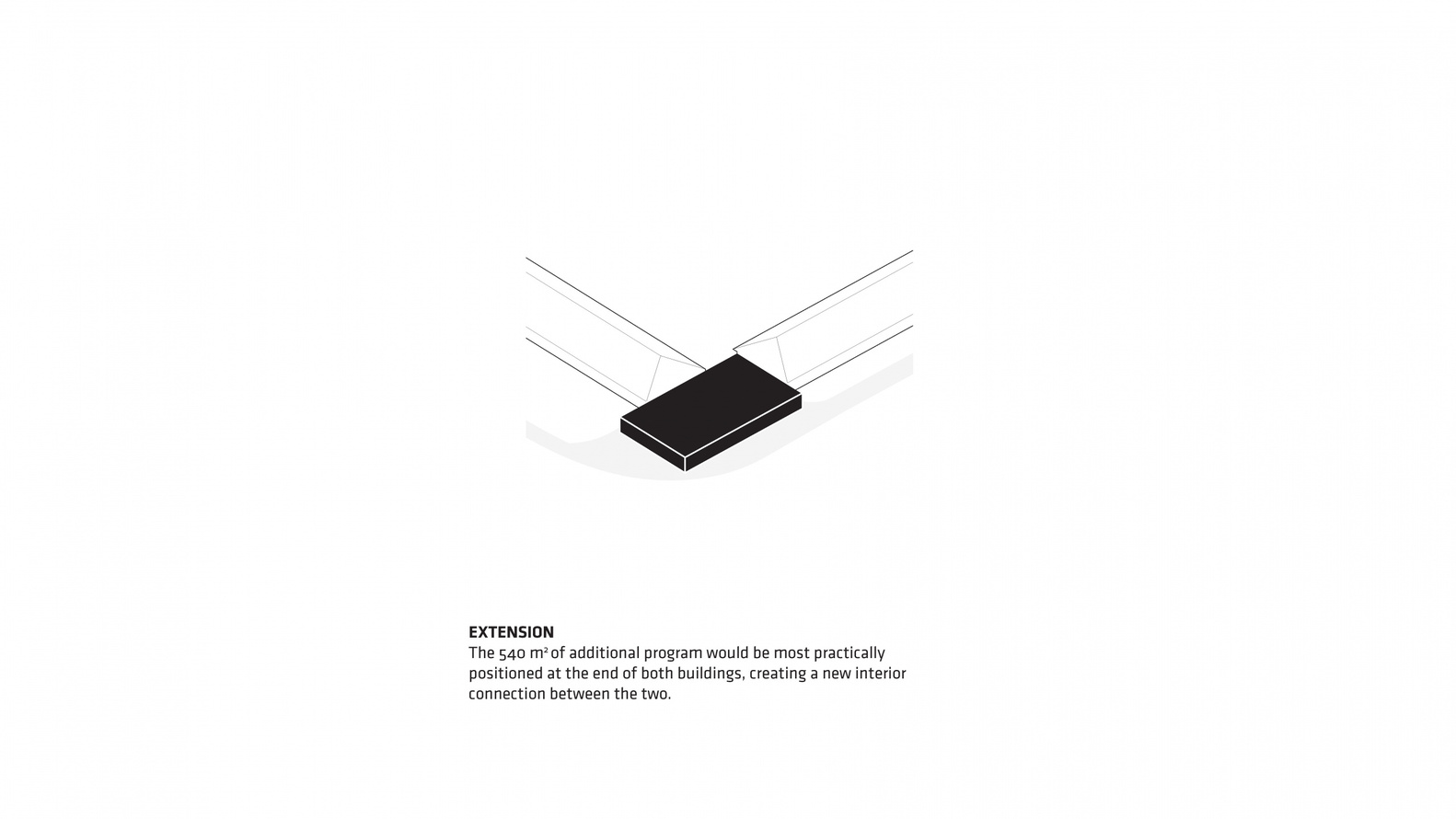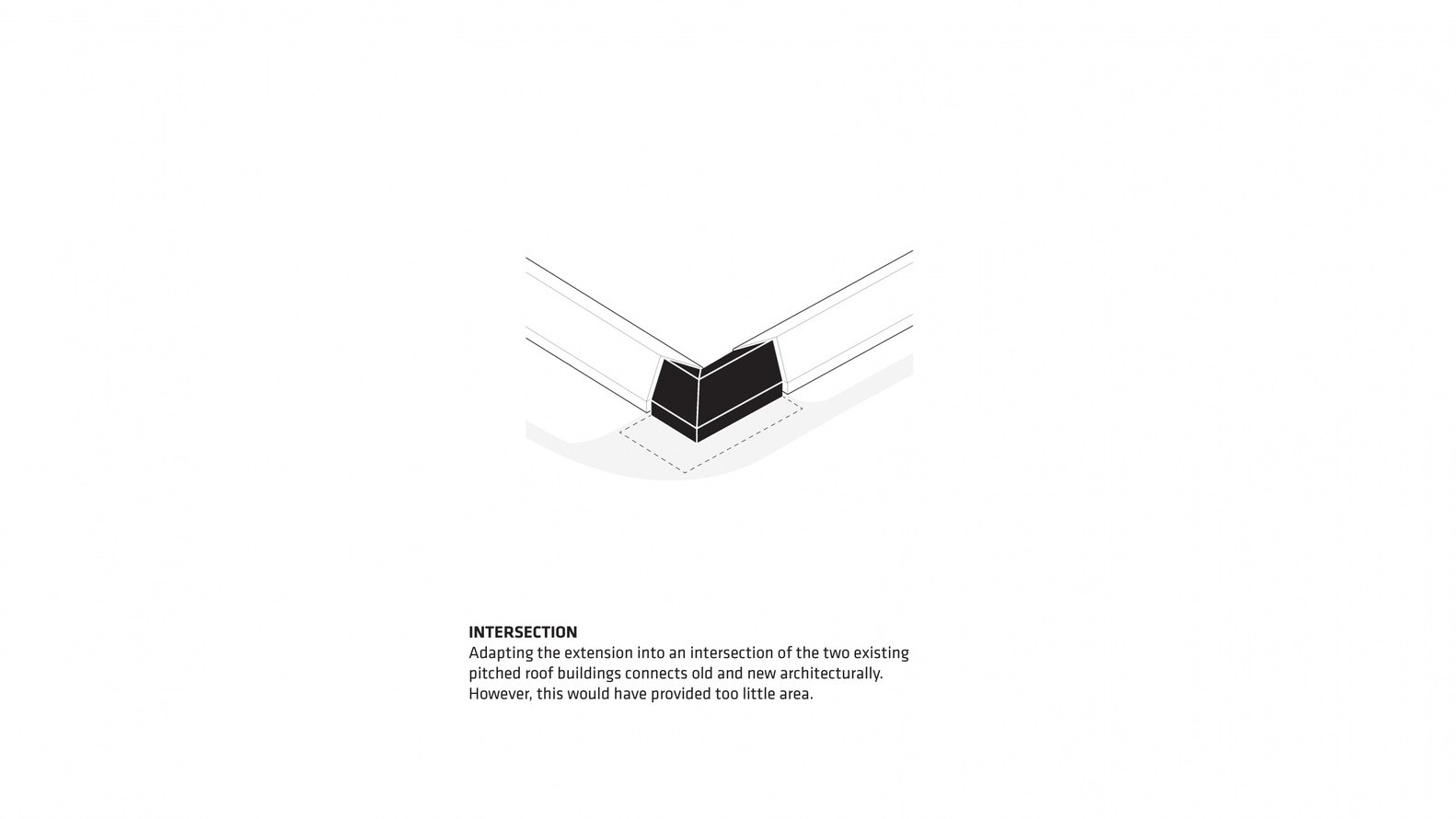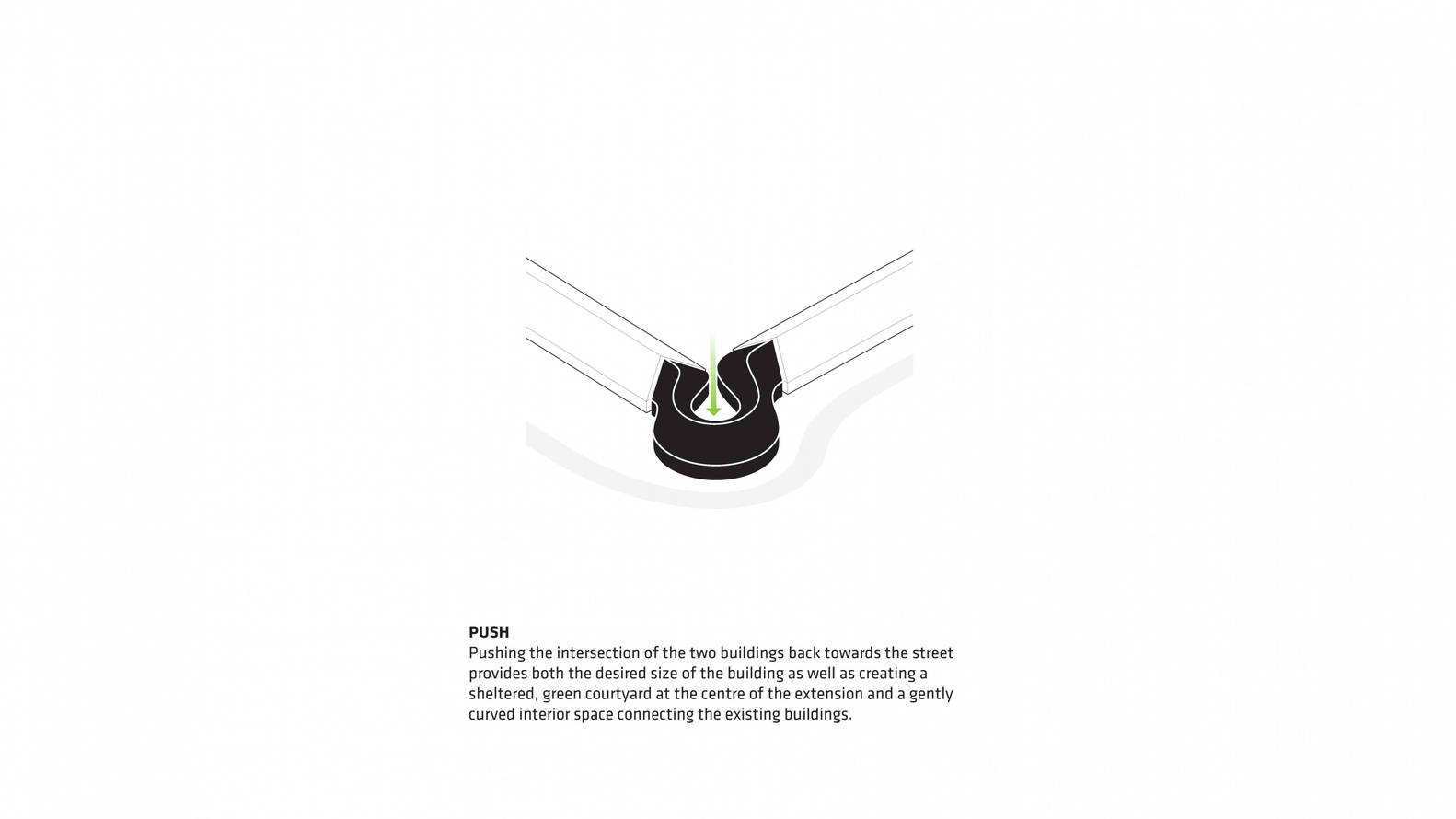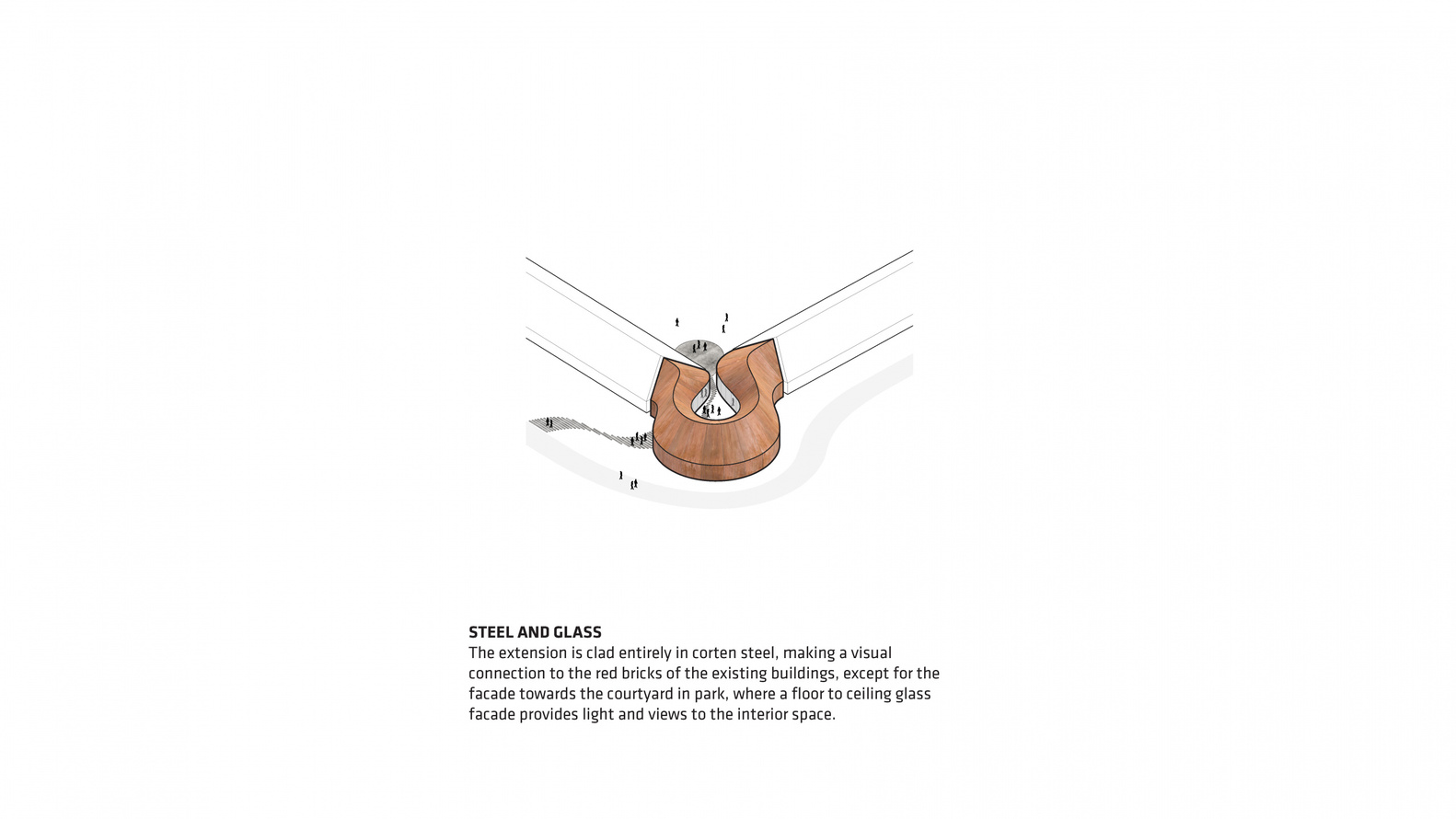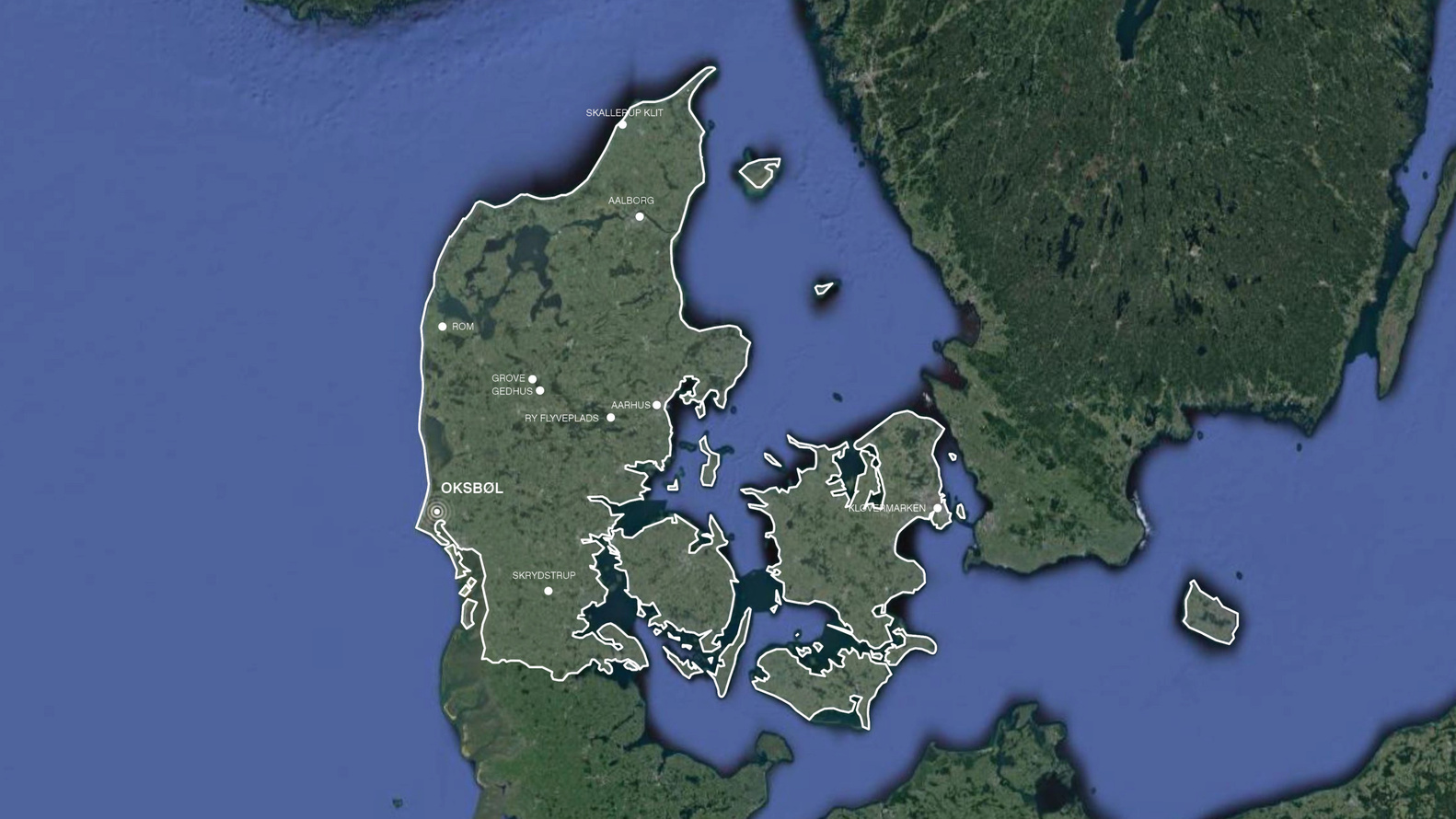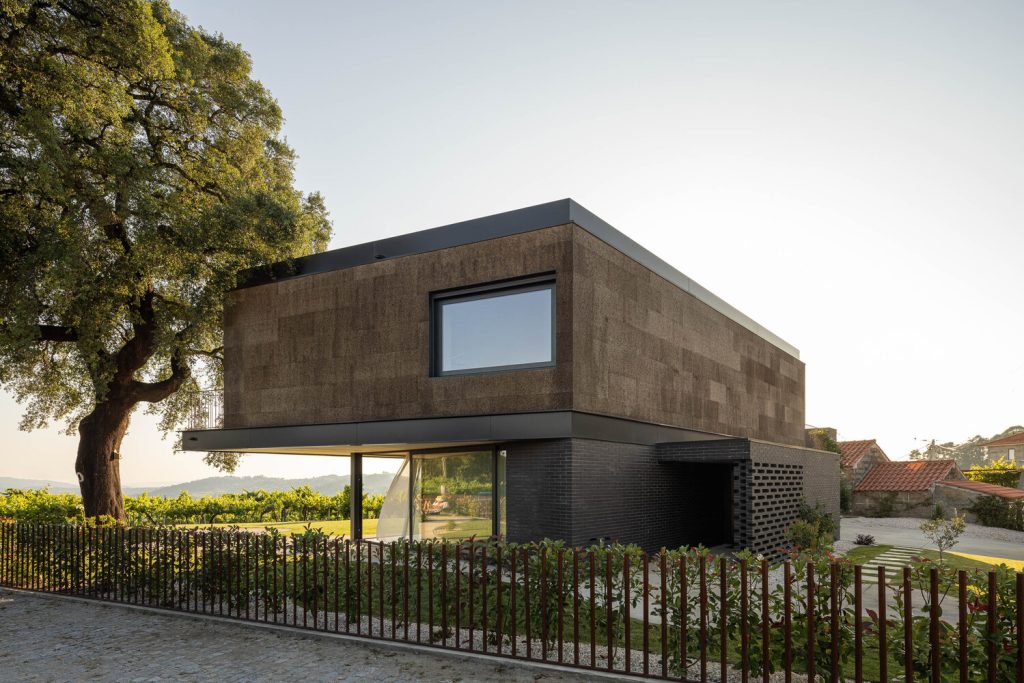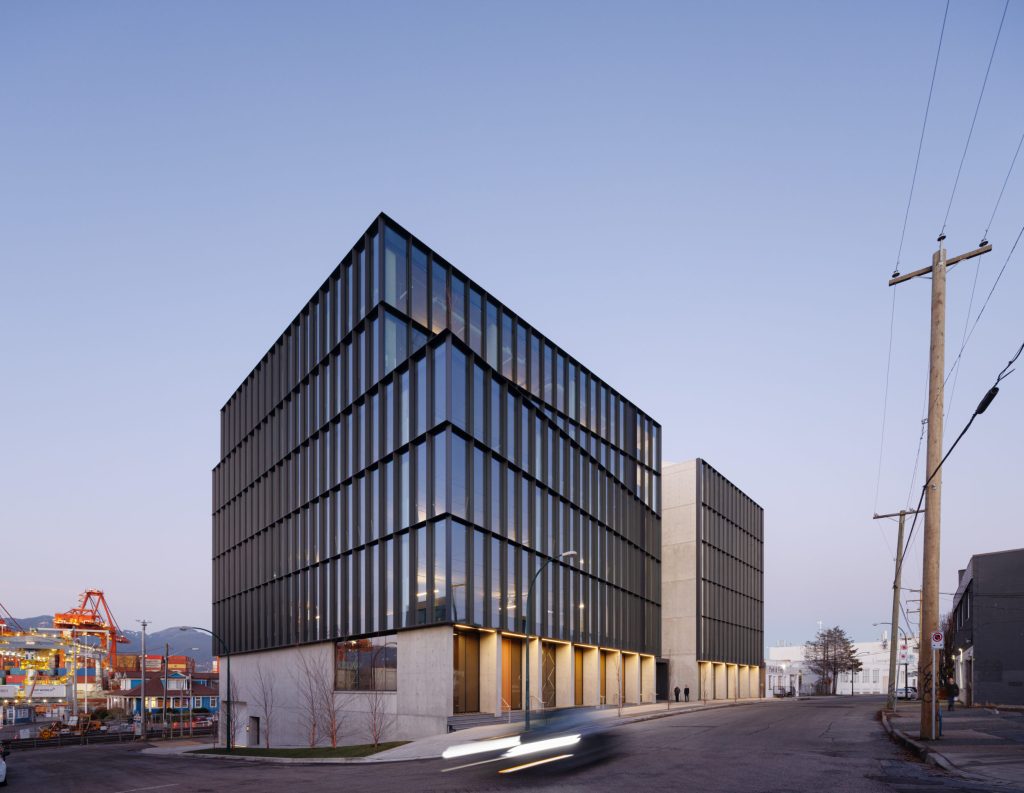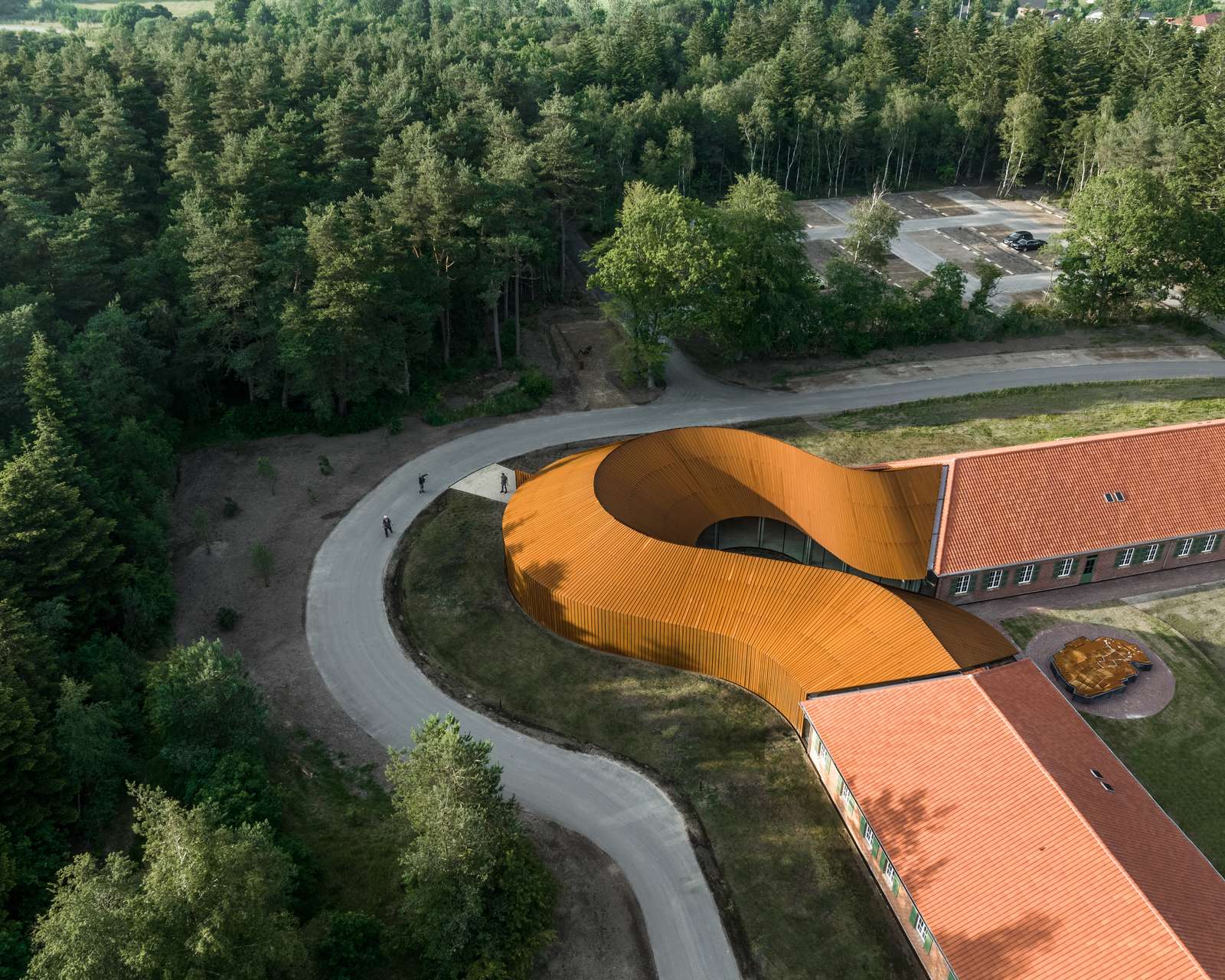
FLUGT – Refugee Museum in Denmark / BIG Bjarke Ingels Group
Completed and inaugurated in June, the FLUGT – Refugee Museum is officially opened to the public this summer at the site of the old Oksbøl refugee camp in southwestern Denmark, which at the end of World War II housed up to 100,000 German refugees. The project, entrusted to design firm BIG Bjarke Ingels Group, was conceived with the aim not only to tell the story of the largest stream of refugees that Denmark has ever received, giving them a voice and a face, but also to focus attention on the burning issue of refugees, asylum-seekers and migrants of all times. The museum – Claus Kjeld Jensen, FLUGT Director said – turns statistics into people and conveys the universal issues, emotions and all the complex details associated with the plight of being a human being on the run. Both in the past and in the present.
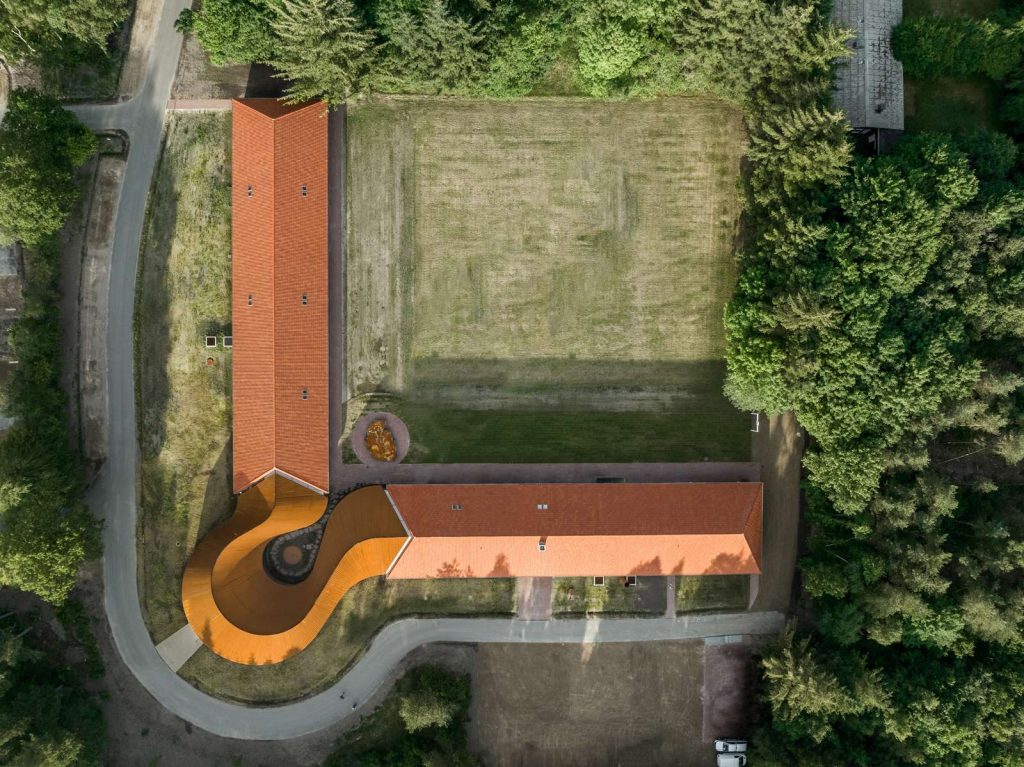
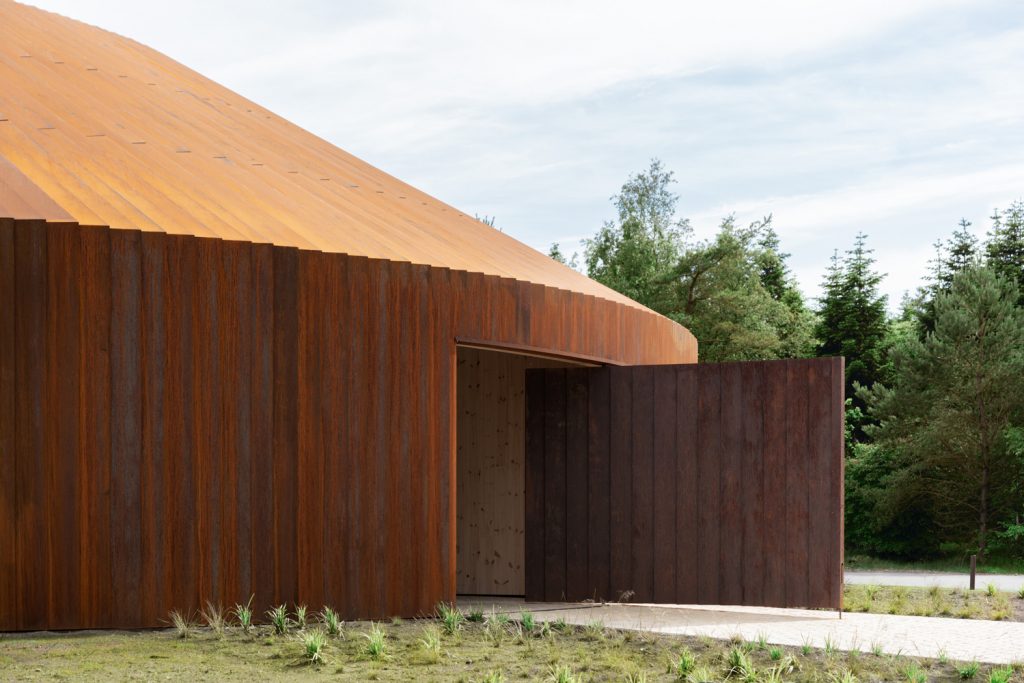
For the creation of this 1,600 sqm museum, firm BIG has preserved and restored the two wings of the former hospital, one of the camp’s few remaining structures, and added a new curve-shaped volume that connects them. The two original wings of the former hospital – transformed after the camp was closed in December 1948 into a center for conscientious objectors, a youth hostel and a temporary shelter for refugees – retain the exterior with red-tiled roofs and red brick walls marked by a row of small-mullioned windows. Inside, the old wards and operating rooms have been turned into modern spaces to accommodate a cinema, a cafeteria, a conference room and eight large exhibition spaces, where the experiential design by the Dutch company Tinker Imagineers brings the stories of refugees to life through sound, images and interactive elements.
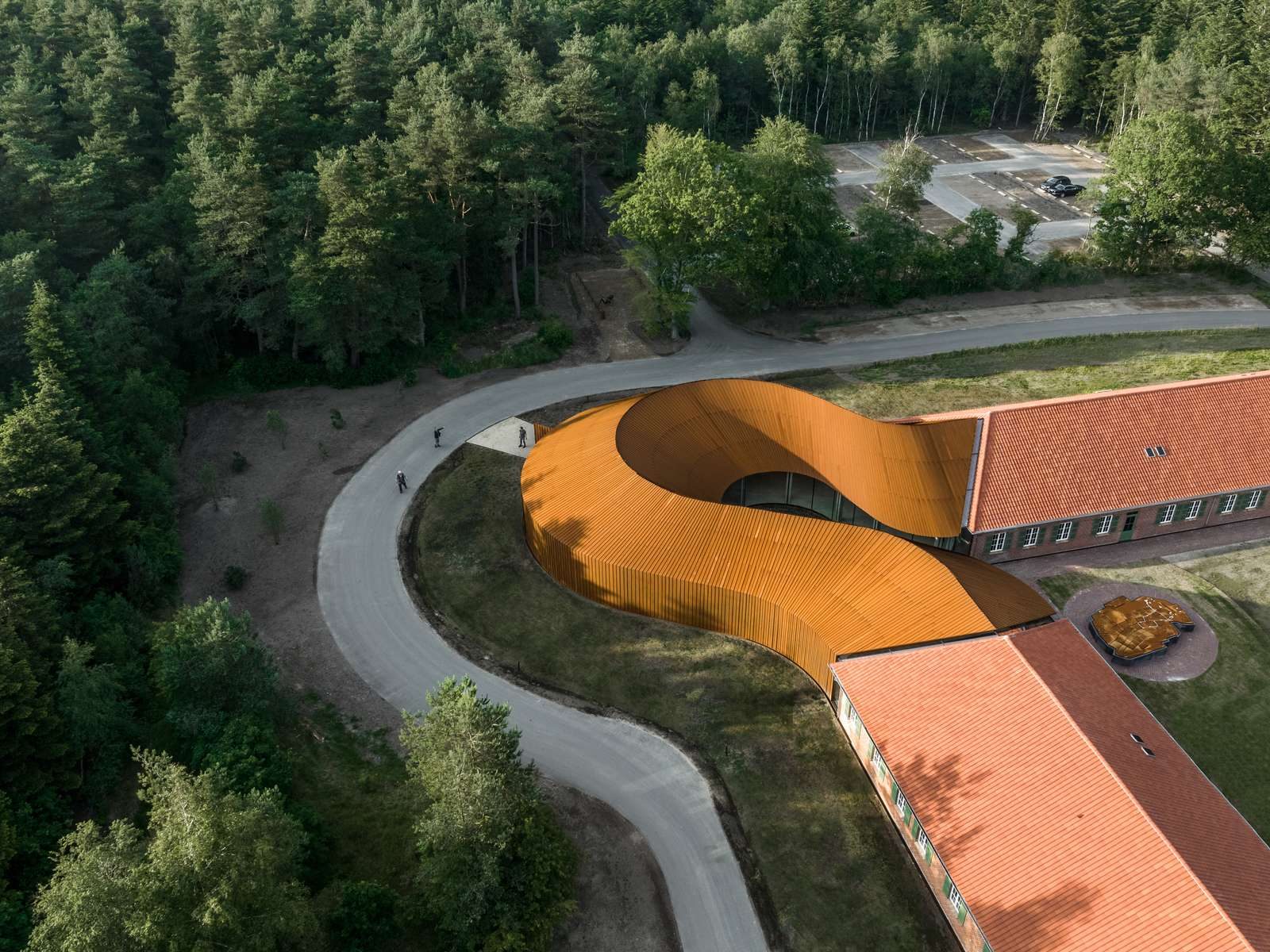
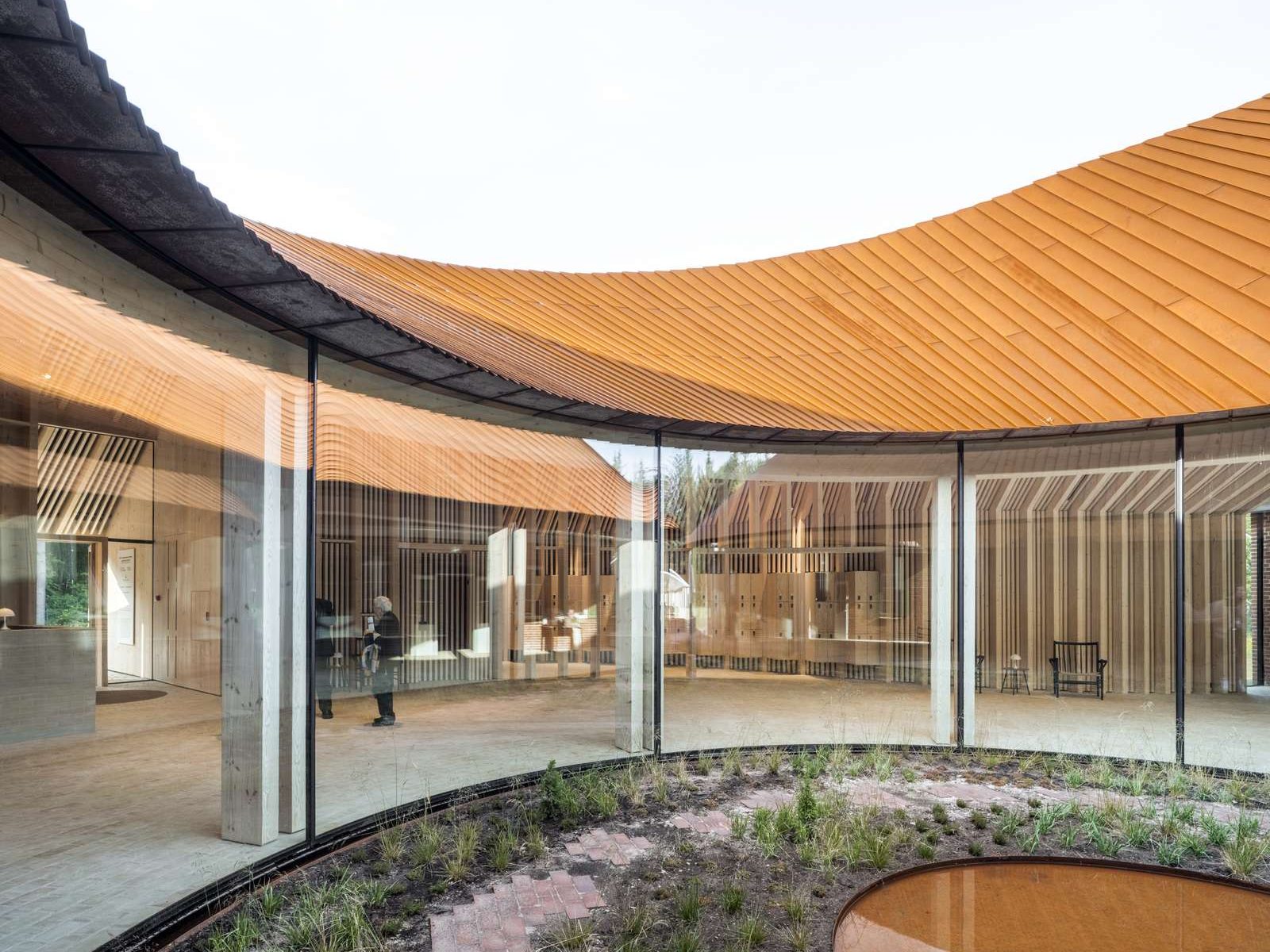
The wings have been connected by a 500 sqm new volume, which functions as entry hall and characterizes the museum with its curved shape, gently pulled towards the street, and its cladding made with 50 tons of COR-TEN steel. The new curve-shaped volume designed by BIG Bjarke Ingels Group that physically connects the two renovated wings of the former hospital at the Oksbøl refugee camp represents a symbolic link between past and present. This project has been close to my heart and to the heart of the practice – architect Bjarke Ingels explained – given that it will convey to visitors – expected to be more than 100,000 every year – one of the greatest challenges the world is facing today: how to welcome and care for all those people who for various reasons are forced to flee and leave their countries.
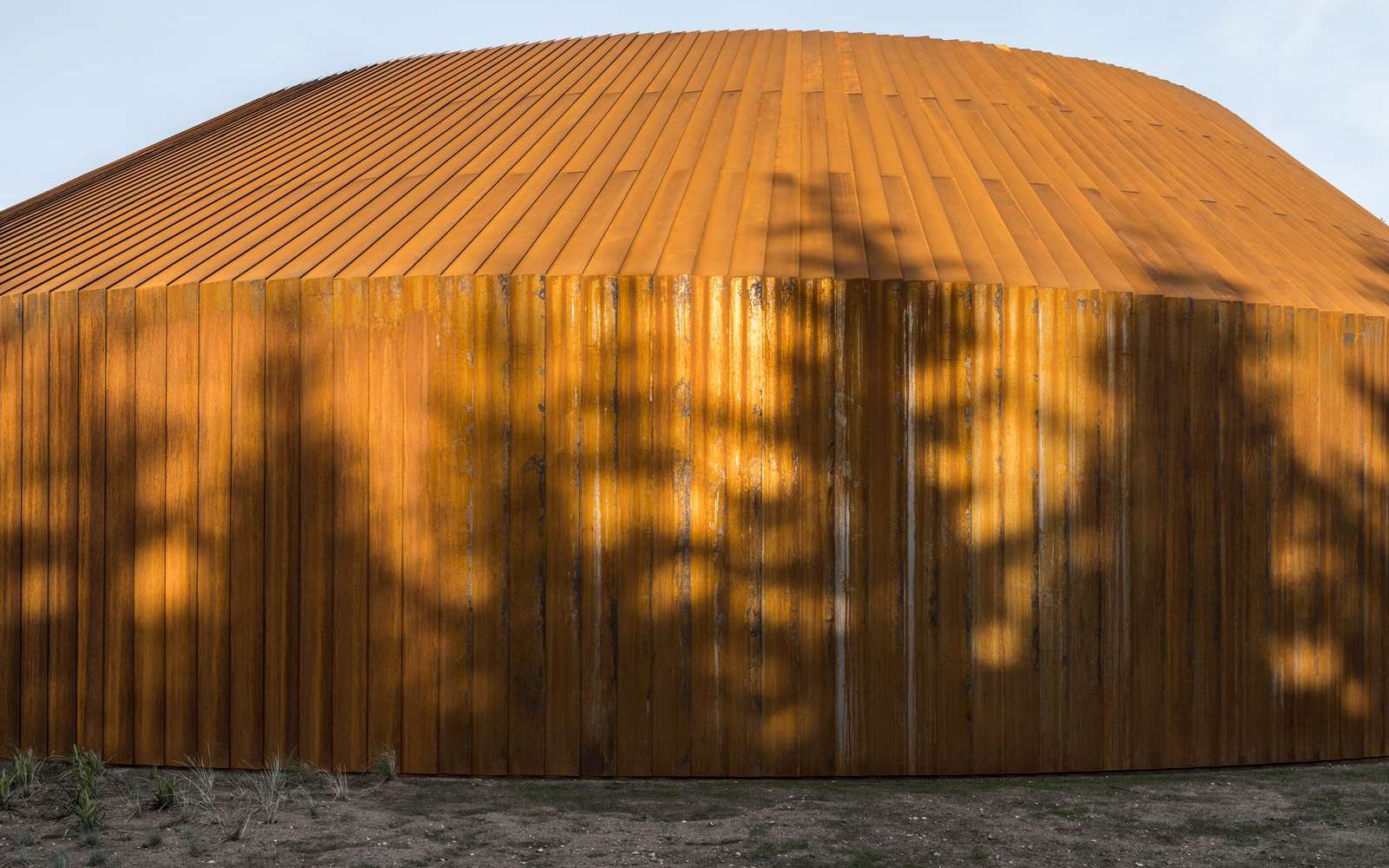

If from outside the new volume welcomes visitors into what appears to be an enveloping structure, closed in its solid COR-TEN steel cladding, upon entering they find themselves in a wide open space, characterized by a complex roof made with 110 rafters, no two of which alike, and by floor-to-ceiling curved glass walls which, in addition to maximizing the brightness of the interiors, reveal the view of the nearby forest and of the Zen image of a sheltered green courtyard with a small mirror pool. From this space which functions as entry hall hosting the ticket office, the cloakroom and a bookshop, visitors can proceed along the exhibition path in the two wings.
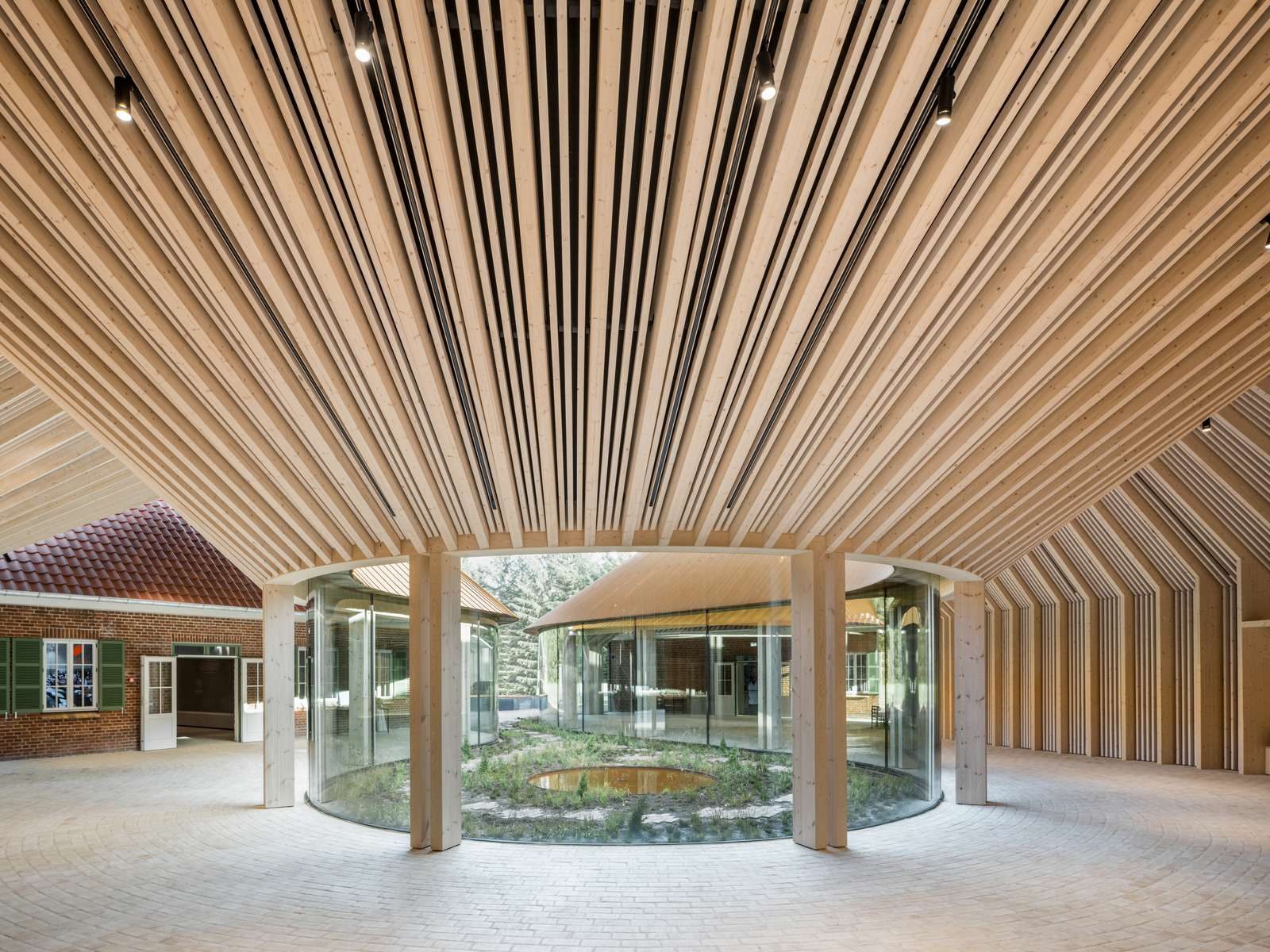

In the north wing the exhibition spaces are organized according to the original Entry and Exit Flow in the former hospital. Here some of the inside walls have been kept intact and stabilized by three cross sections, while most of the walls of the hospital rooms have been torn down in order to create larger exhibition spaces. The south wing features smaller exhibition areas and other facilities, such as a flexible conference room and a cafeteria. As visitors pass through the various exhibitions, they experience the thematic transition from war to flight and then to the salvation and the possibility of rebuilding a new everyday life and, maybe, a new home. The two wings share the same design choices aimed at linking past and present, such as the use of rustic wood beams, the use of light yellow bricks across the floors, which recall the past of the site, and the definition of a thin line on the ceilings that connects all the spaces.
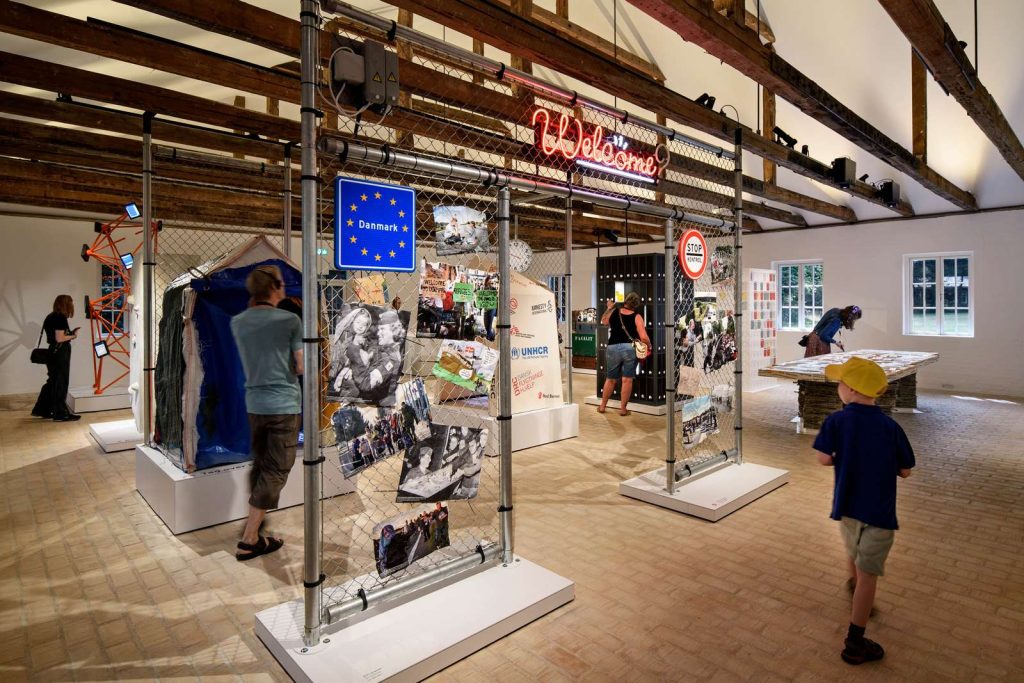

BIG’s decision to preserve and reuse the hospital buildings did not depend only on the desire to respect their historical value, but also to reduce waste, to conserve and enhance the existing resources and to create a smaller carbon footprint due to materials manufacturing and transport. Once completed their visit inside the museum, visitors can move out into the refugee cemetery and into the nearby forest, where almost all the buildings of the camp, the houses, the church and the schools once stood
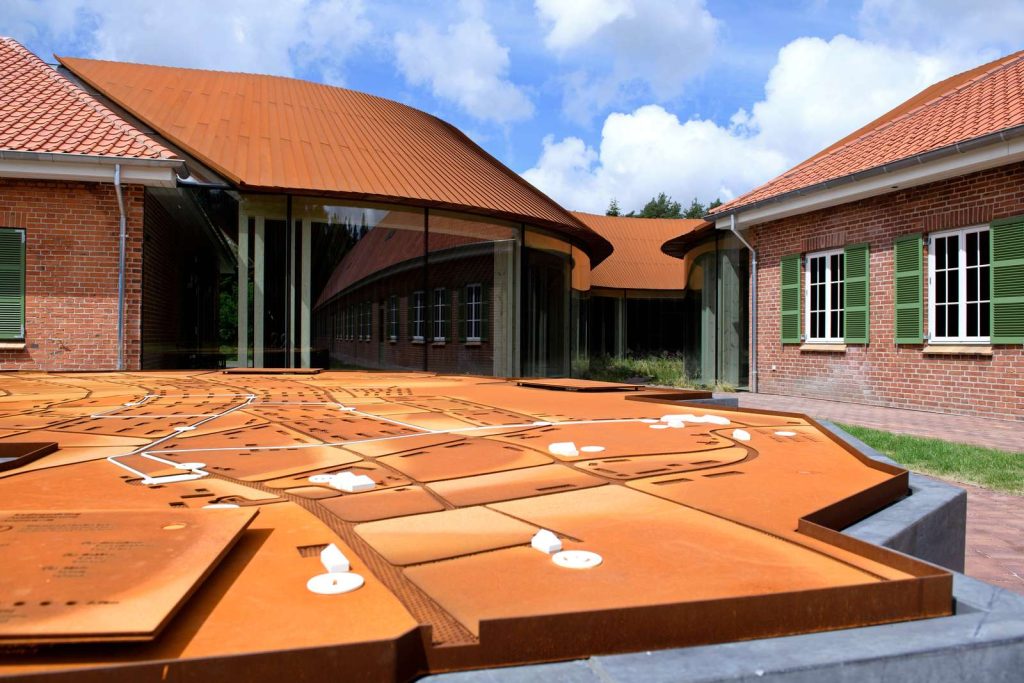
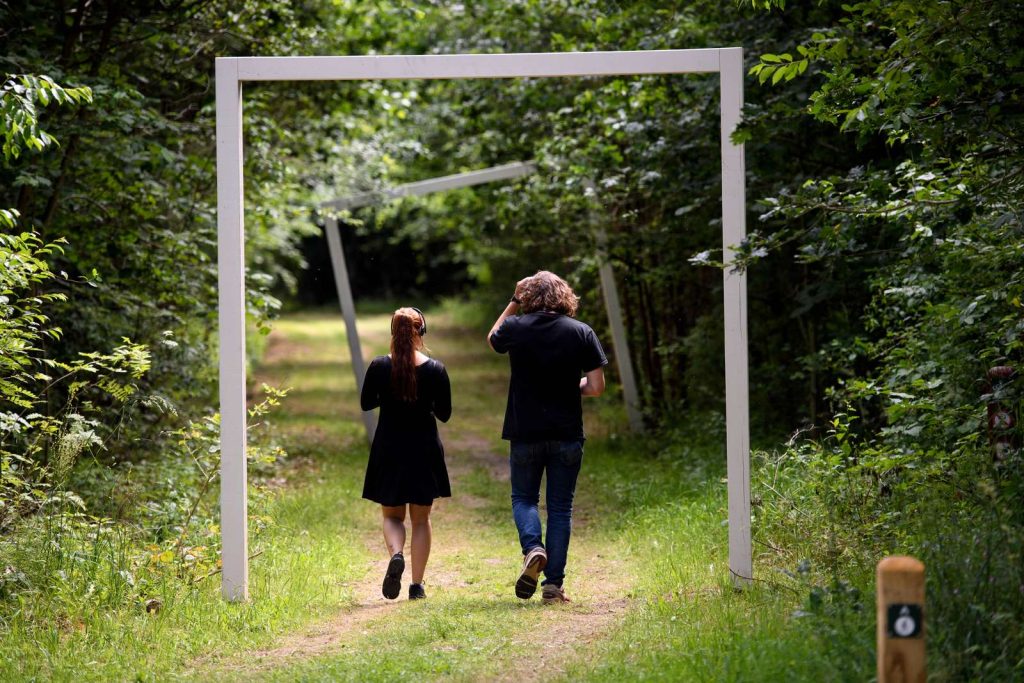
- Area: 1600 m²
- Photographs: Rasmus Hjortshoj, Mike Bink
- Partners In Charge: Bjarke Ingels, Ole Elkjær-Larsen, Finn Nørkjær
- Project Leader: Frederik Lyng
- Project Architect: Frederik Skou Jensen
- Design Team: Ákos Márk Horváth, Anders Holden Deleuran, Andy Coward, Anne Søby Nielsen, Cheng-Huang Lin, Danyu Zeng, David Zahle, Eddie Chiu Fai Can, Gabrielé Ubareviciute, Hanne Halvorsen, Høgni Laksafoss, Laura Wätte, Katrine Juul, Kim Lauer, Lone Fenger Albrechtsen, Lukas Molter, Mads Primdahl Rokkjær, Marius Tromholt-Richter, Michael James Kepke, Muhammad Mansoor-Awais, Nanna Gyldholm Møller, Nikolaos Romanos Tsokas, Oliver Siekierka, Peter Mortensen, Richard Garth Howis, Sascha Leth Rasmussen, Sofiia Rokmaniko, Tore Banke, Thor Larsen-Lechuga, Tomas Karl Ramstrand, Toni Mateu, Tristan Robert Harvey
- Big Landscape: Anne Katrine Sandstrøm, Barbora Hrmova, Giulia Frittoli, Jonathan Udemezue, Kristian Mousten, Ulla Hornsyld
- Collaborators: Ingeniør’ne, Tinker Imagineers, BIG Landscape, BIG Ideas, Gade & Mortensen


